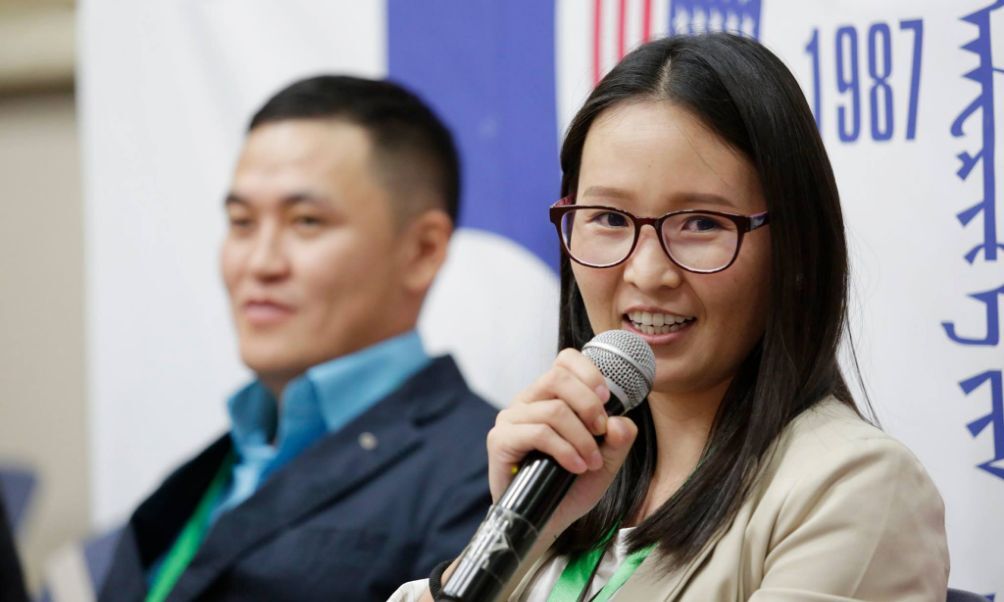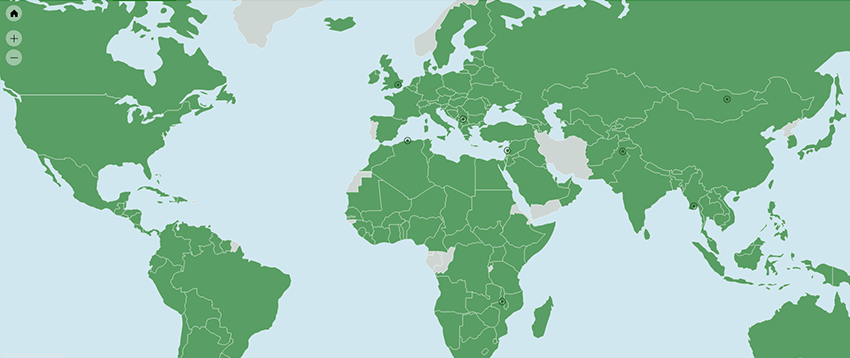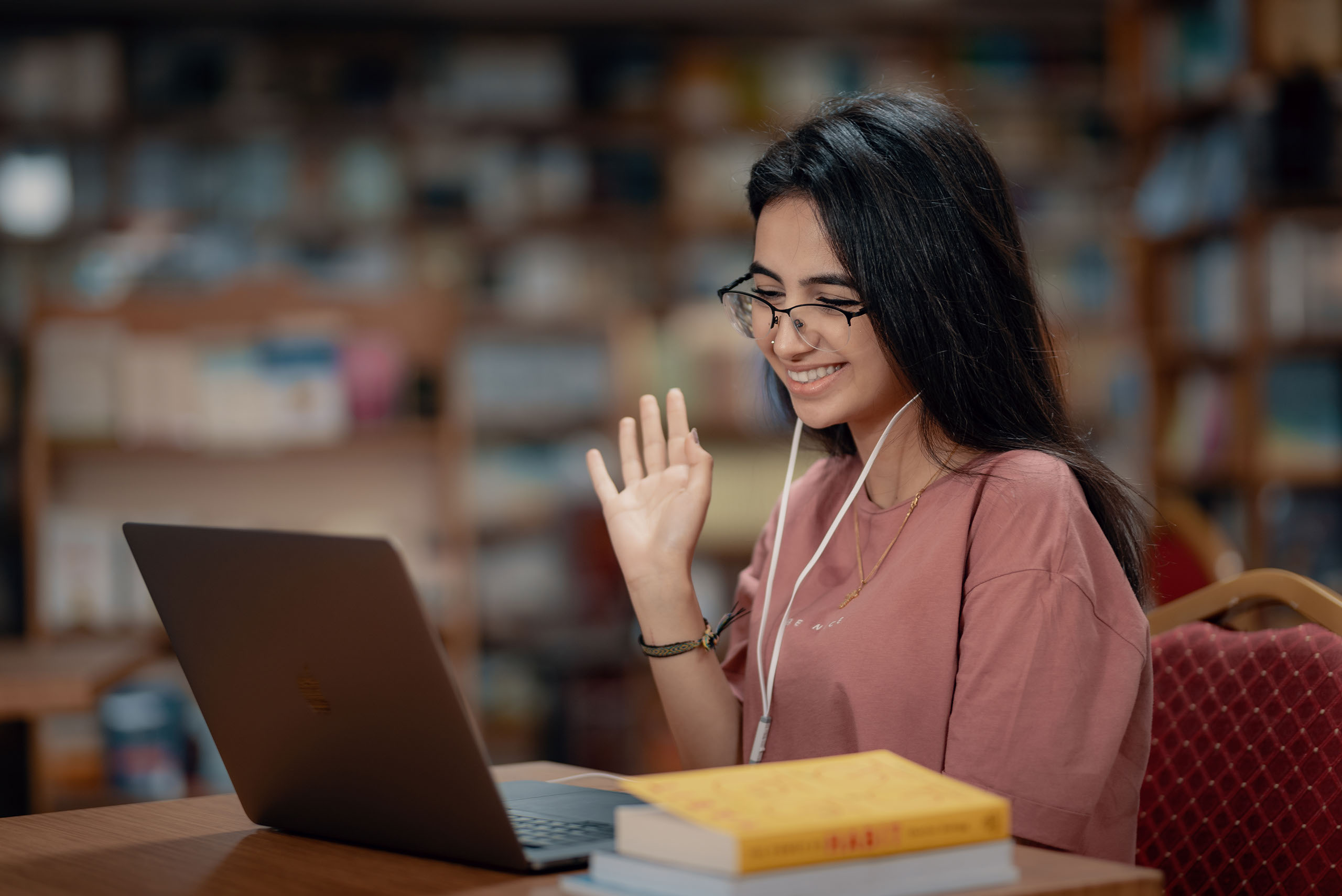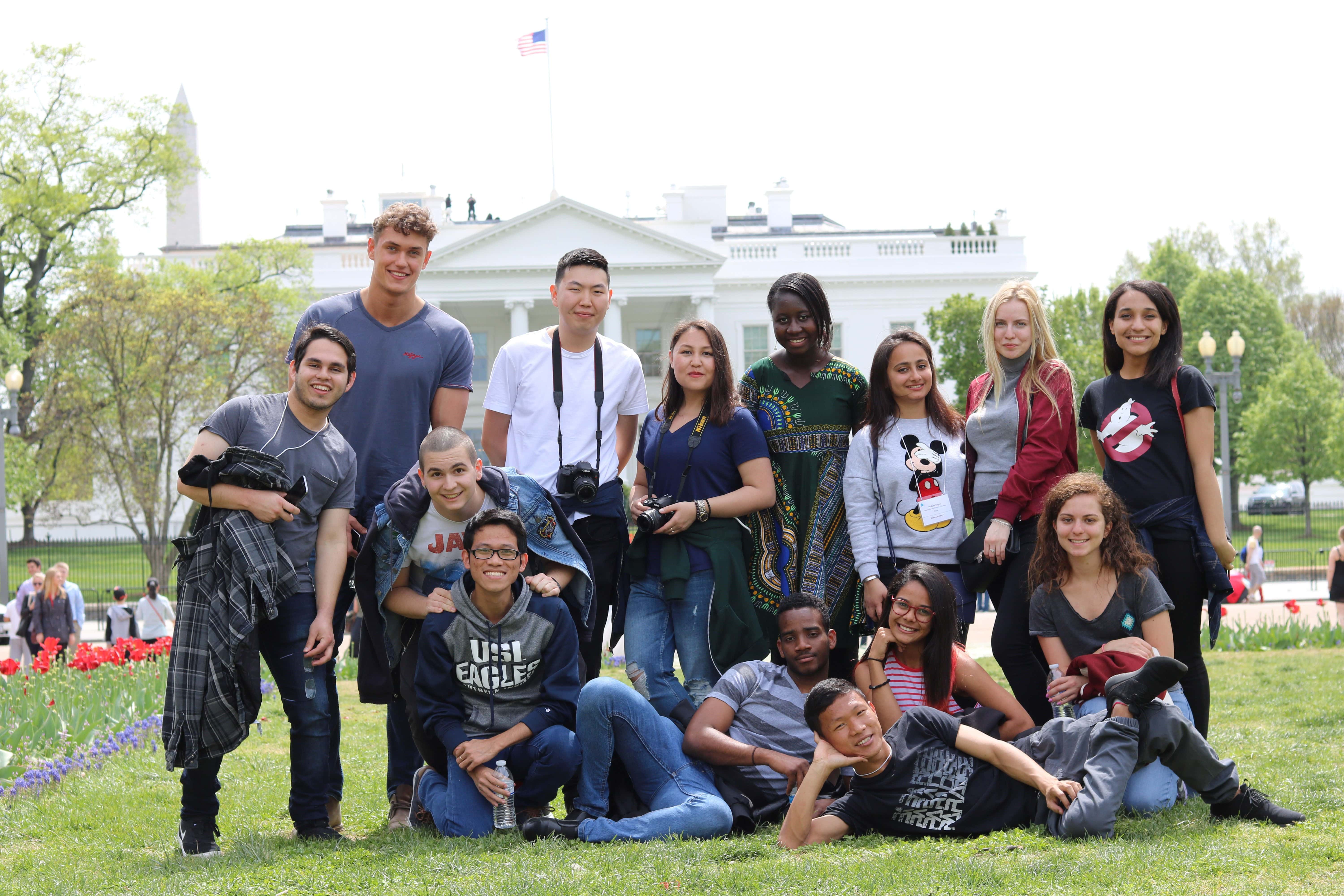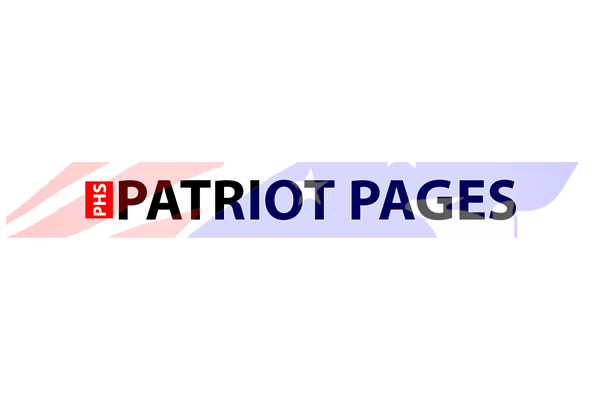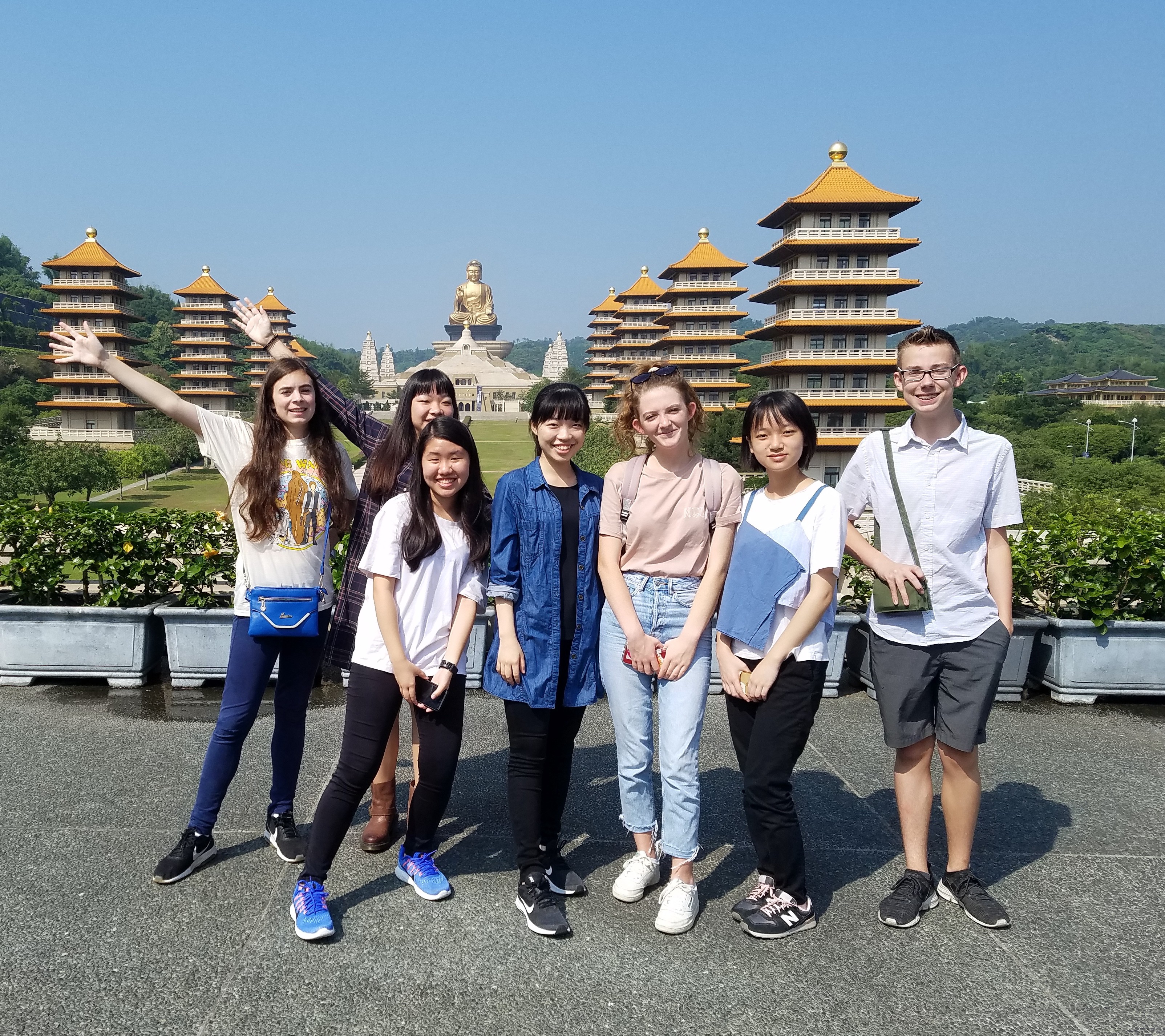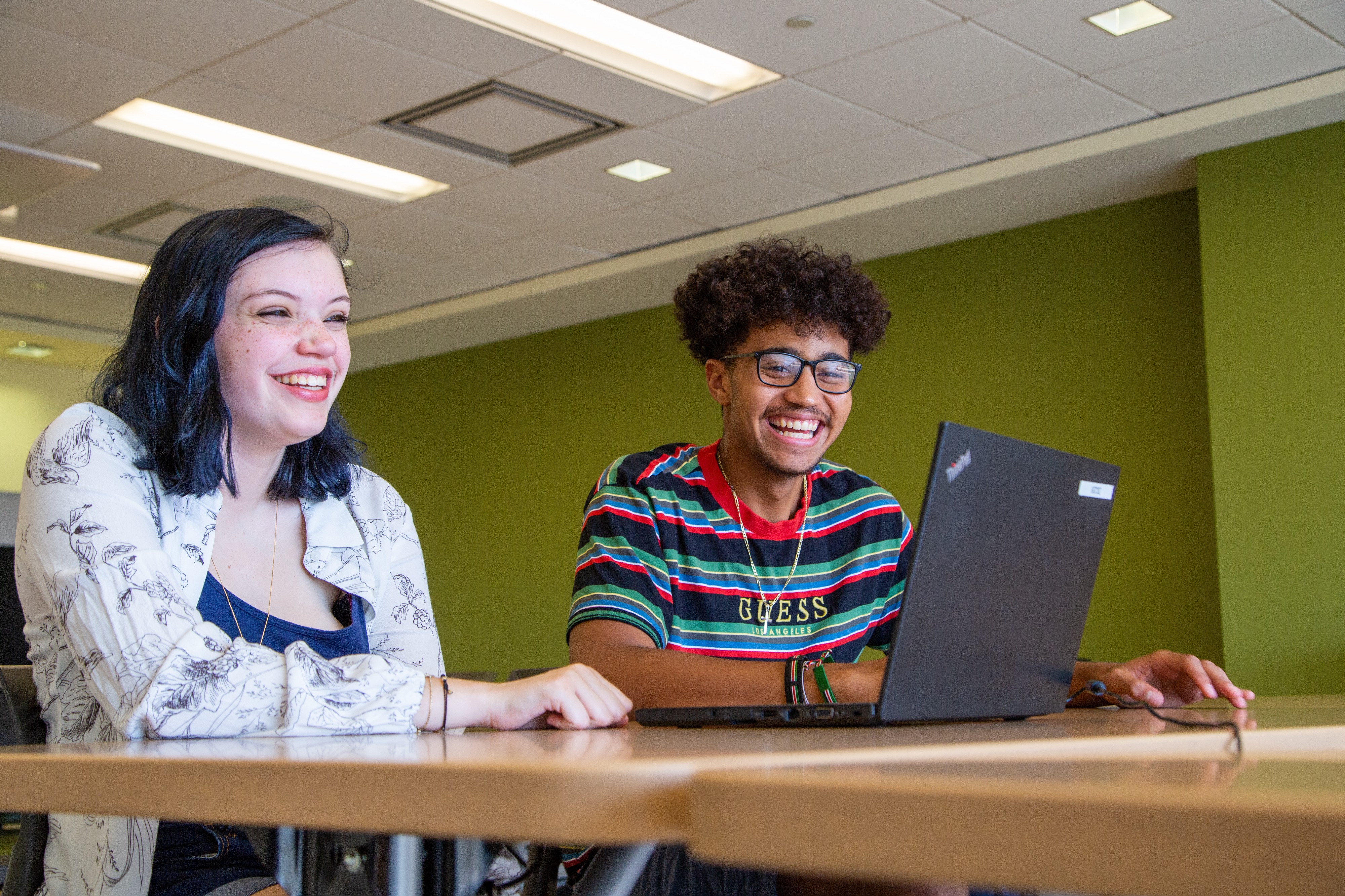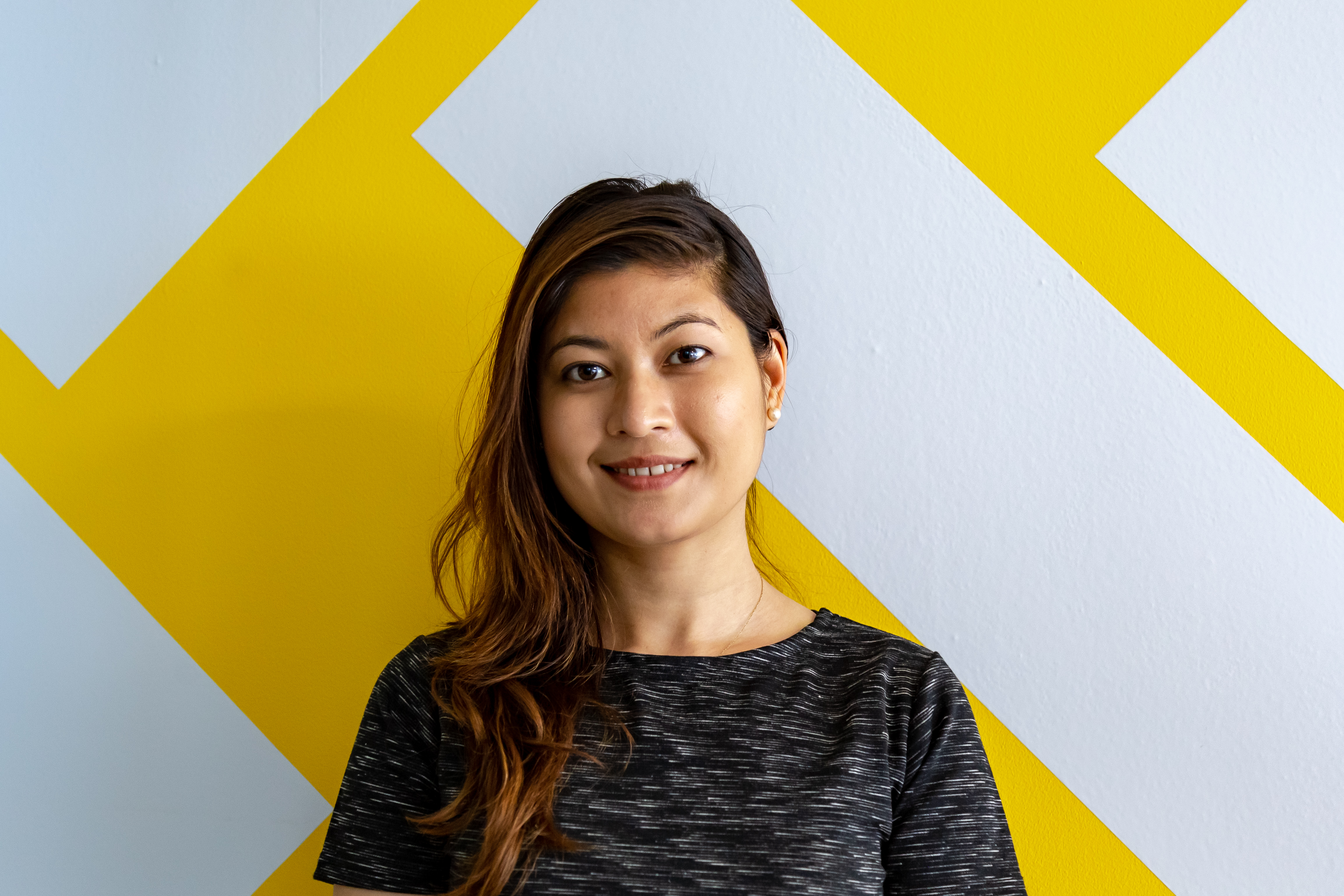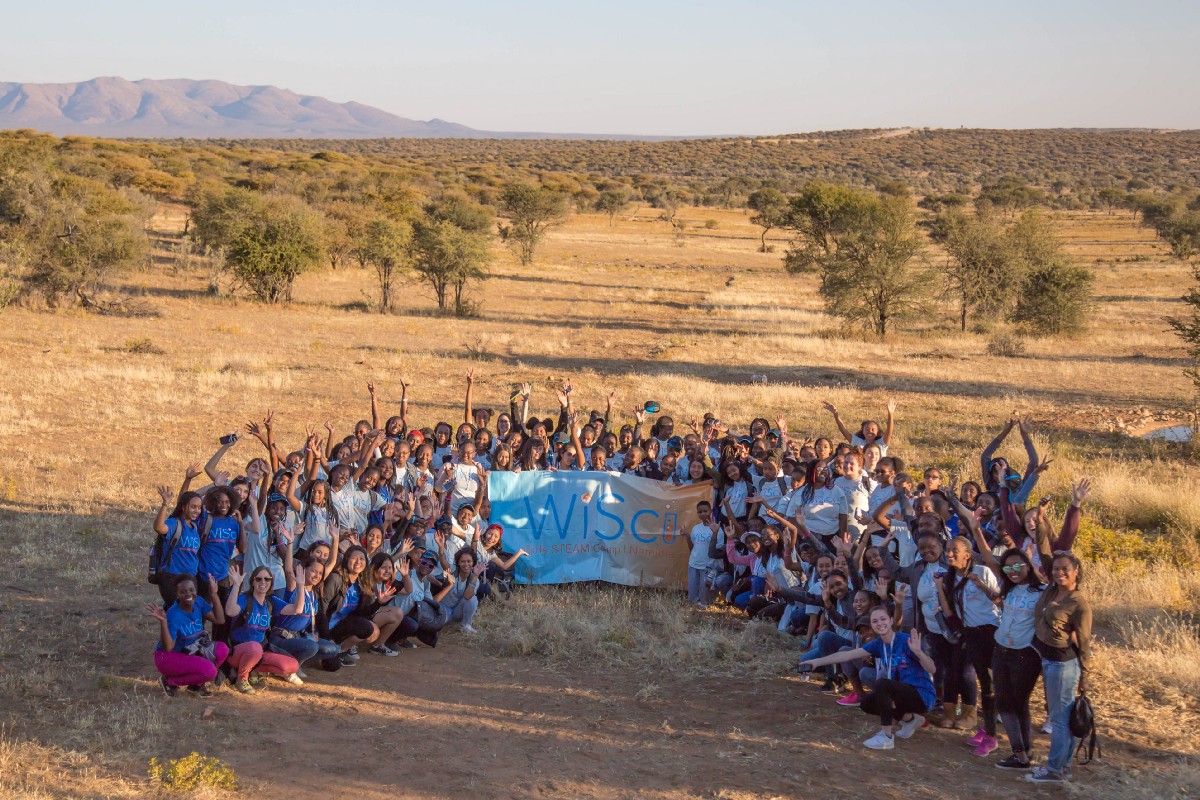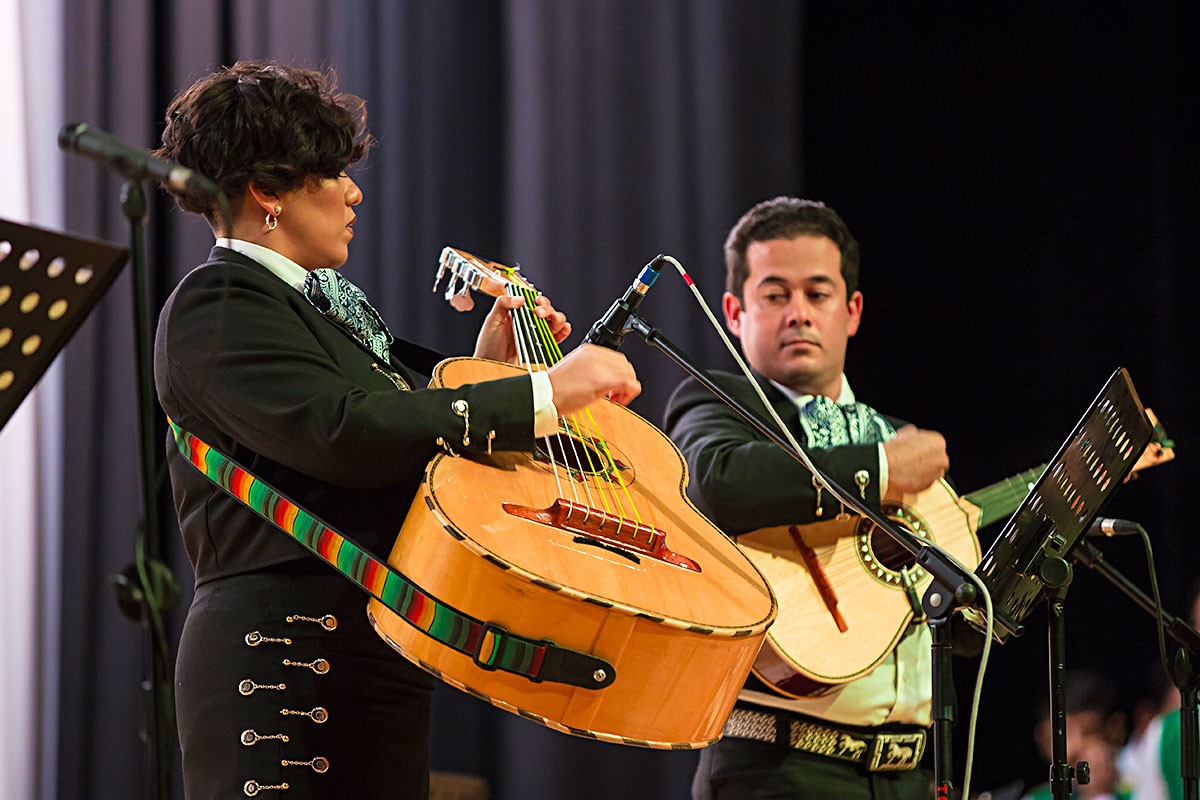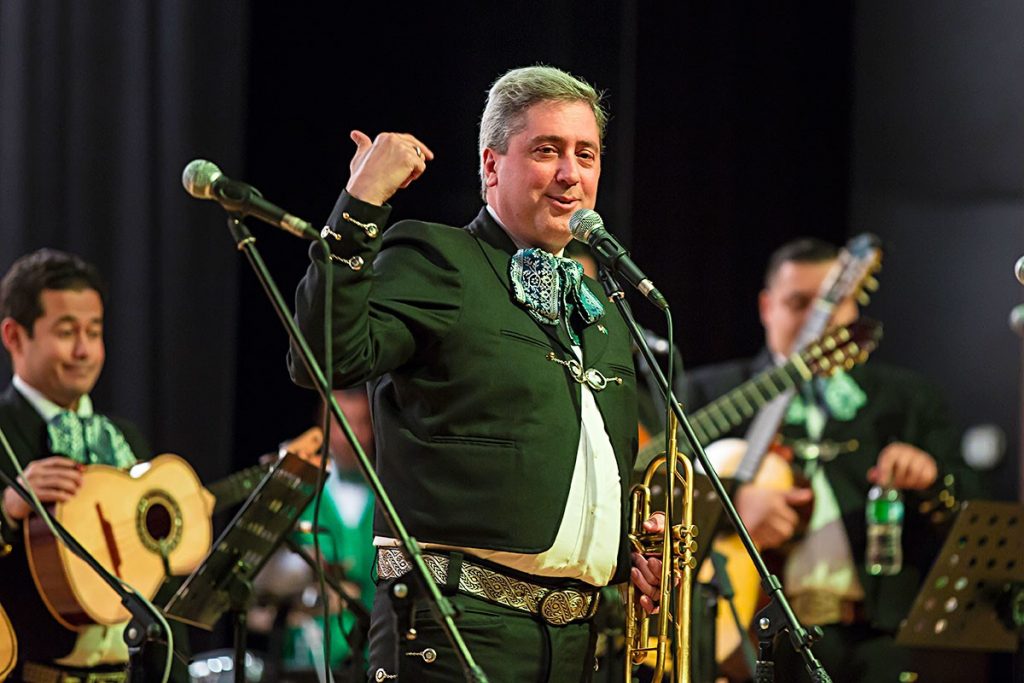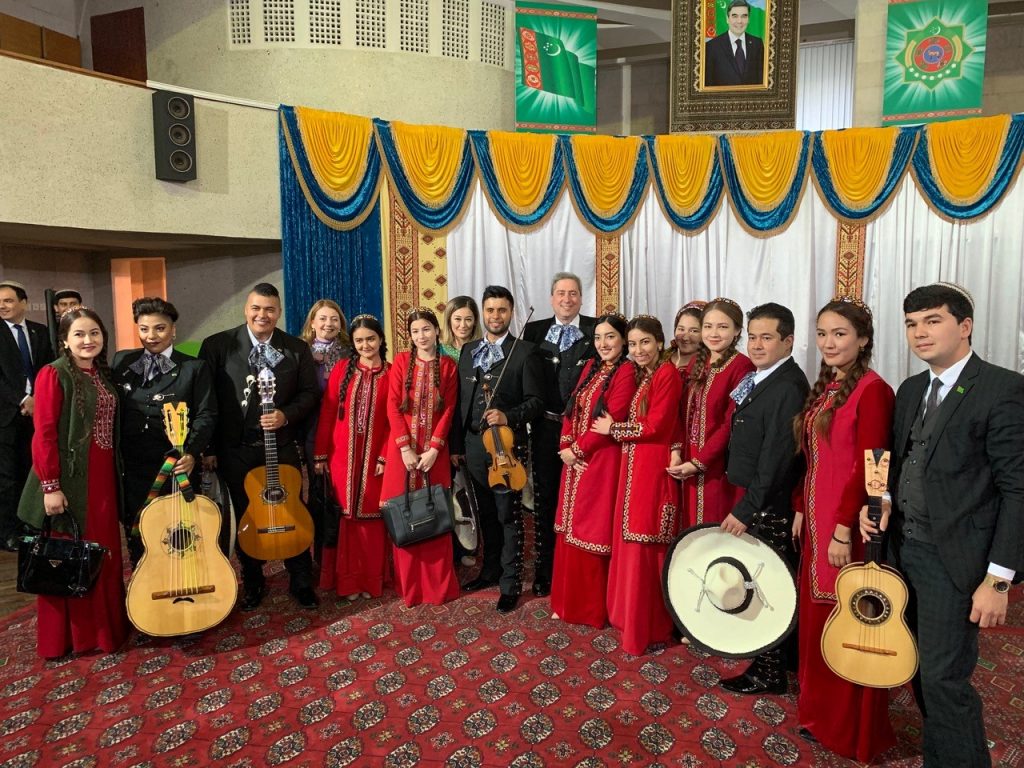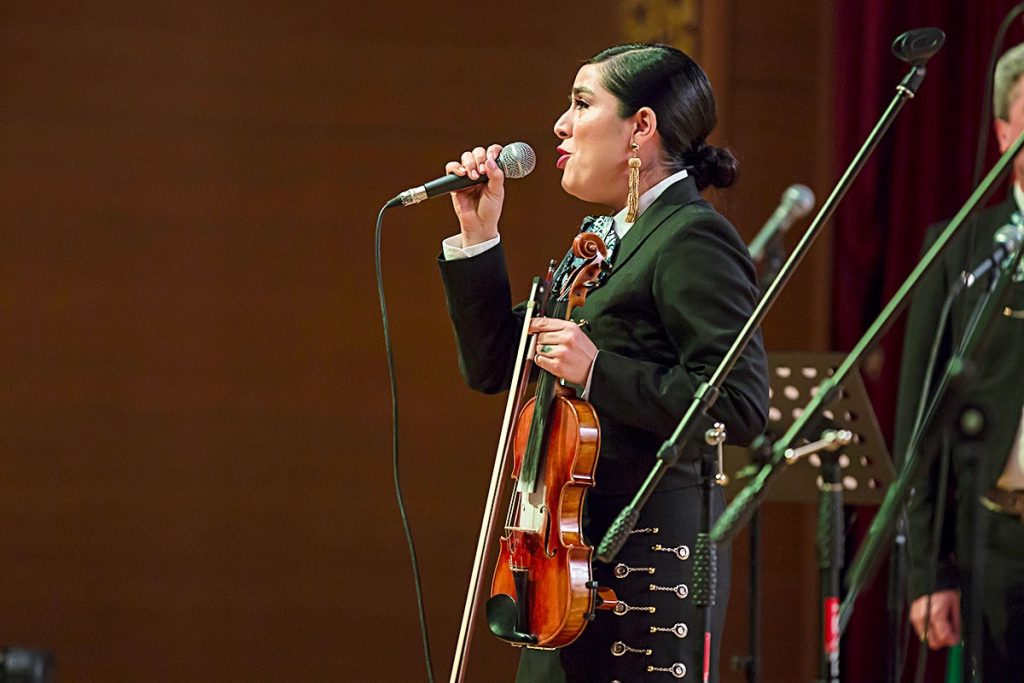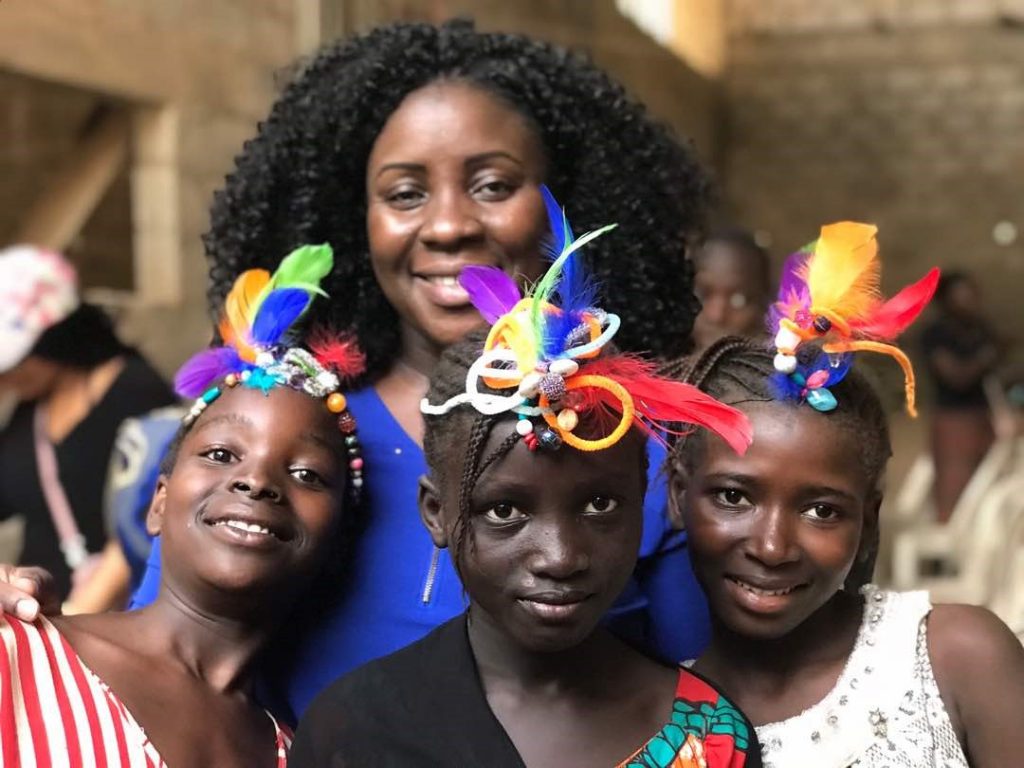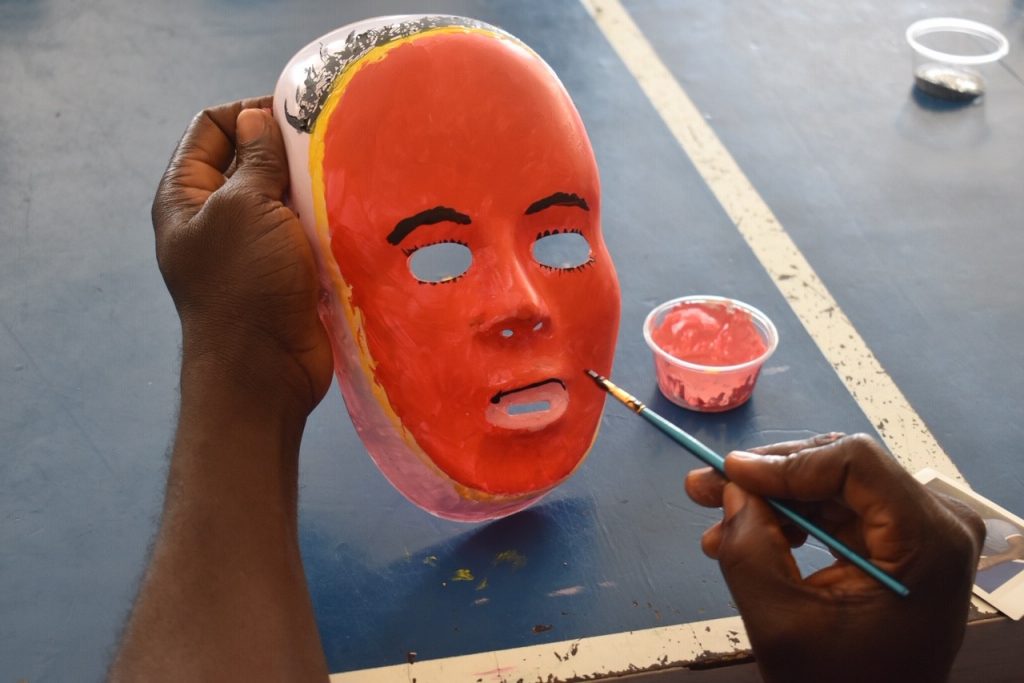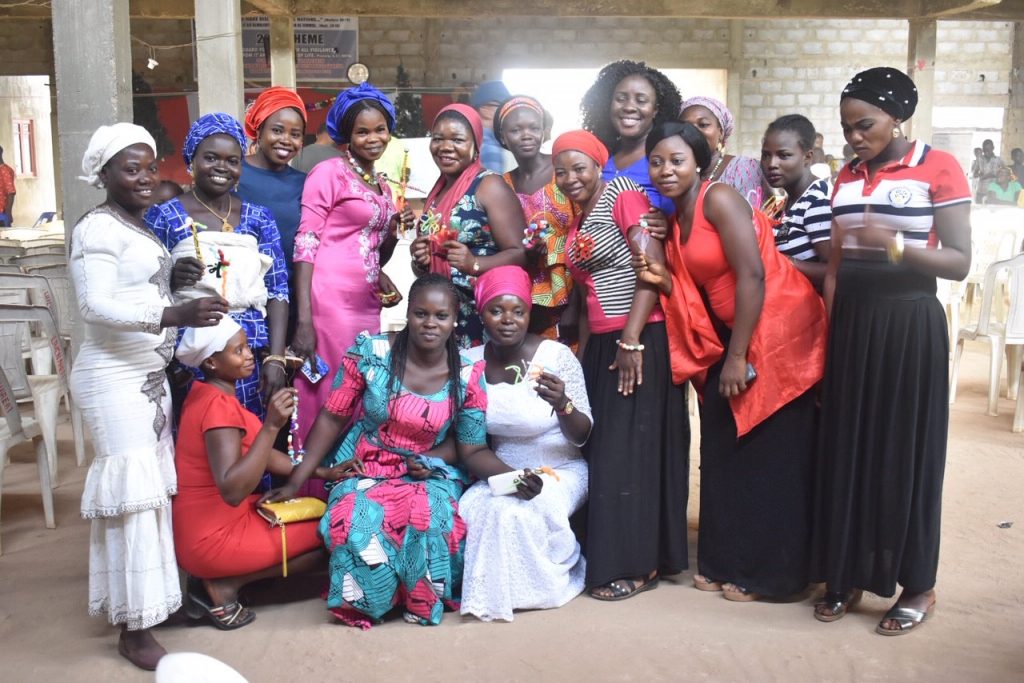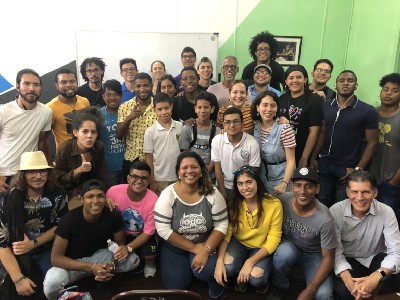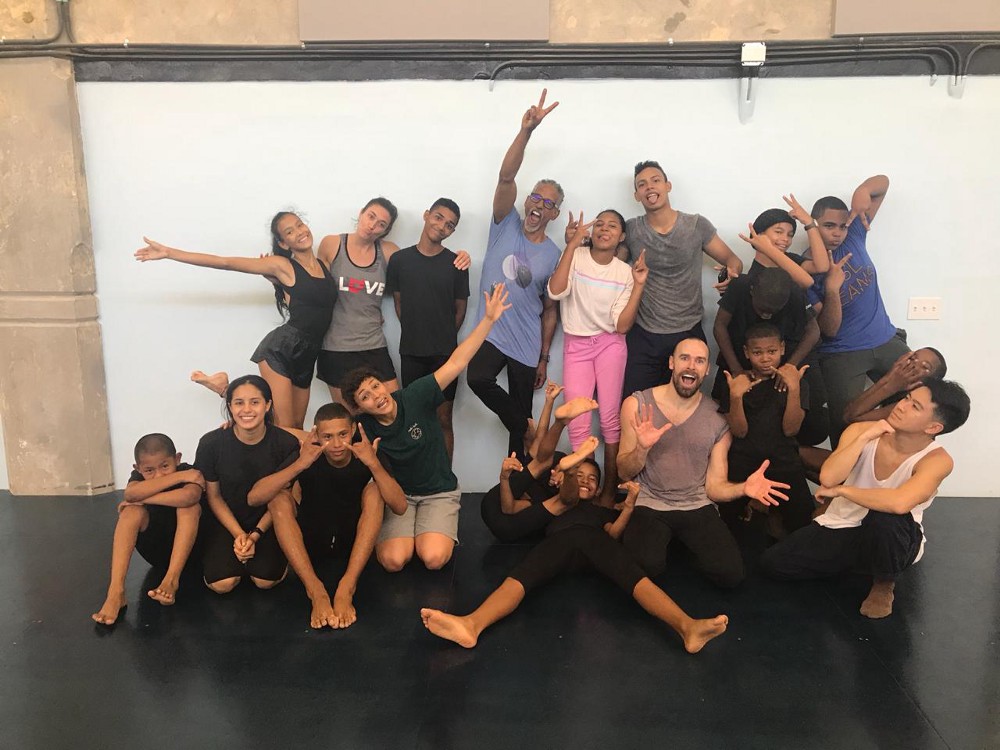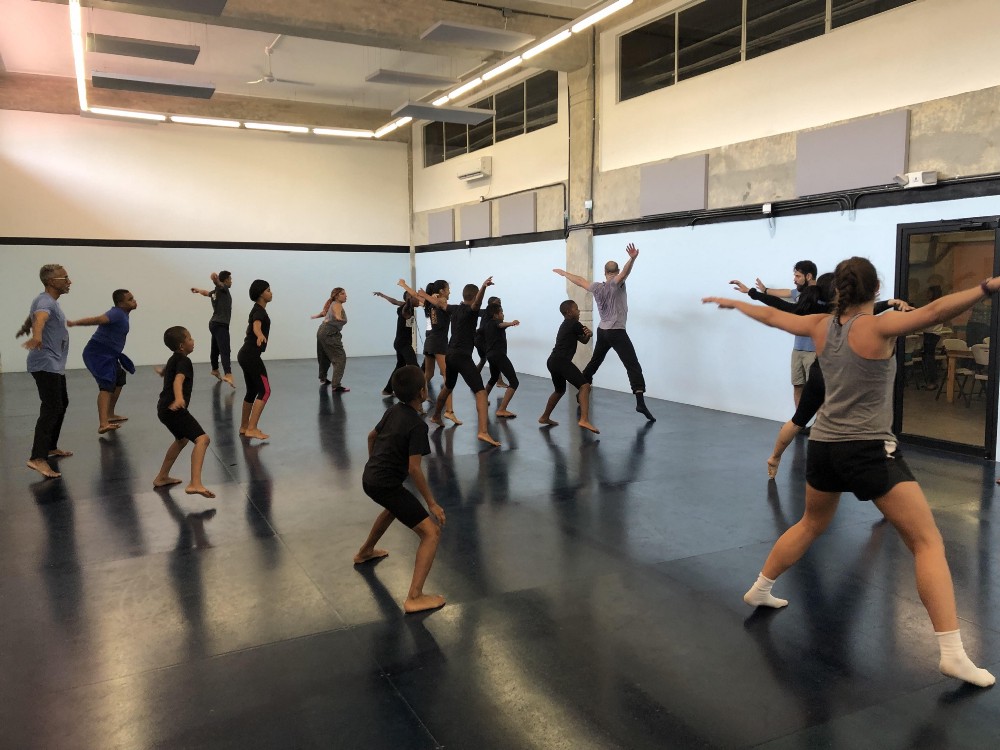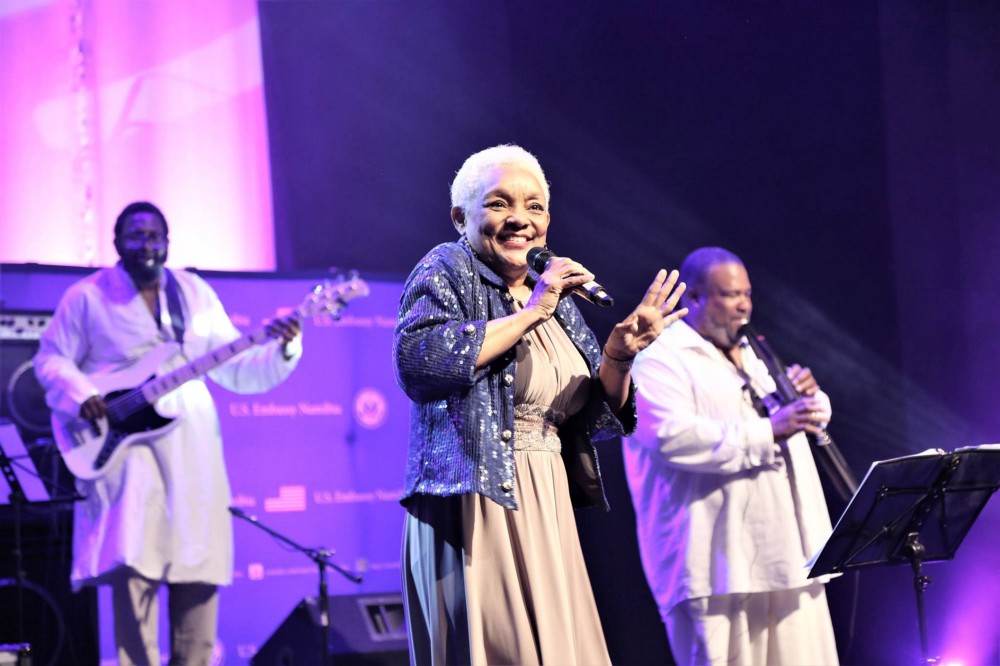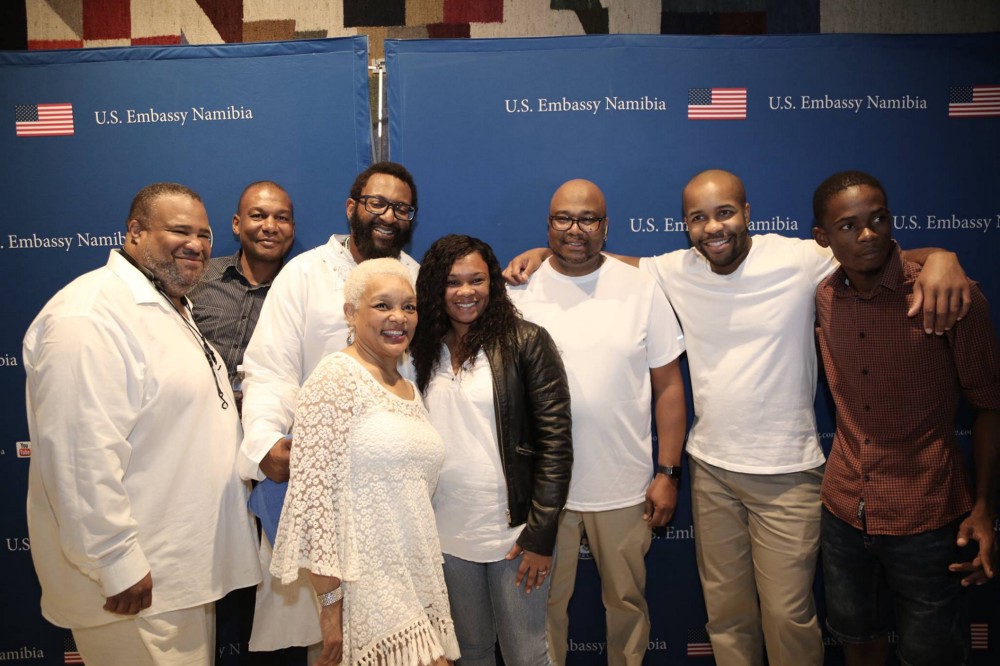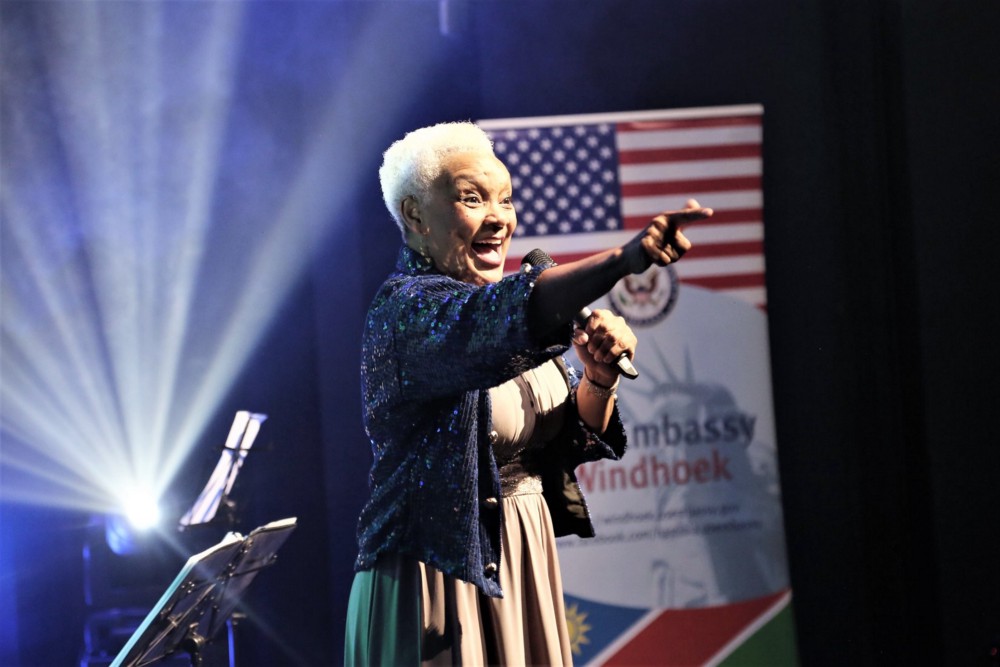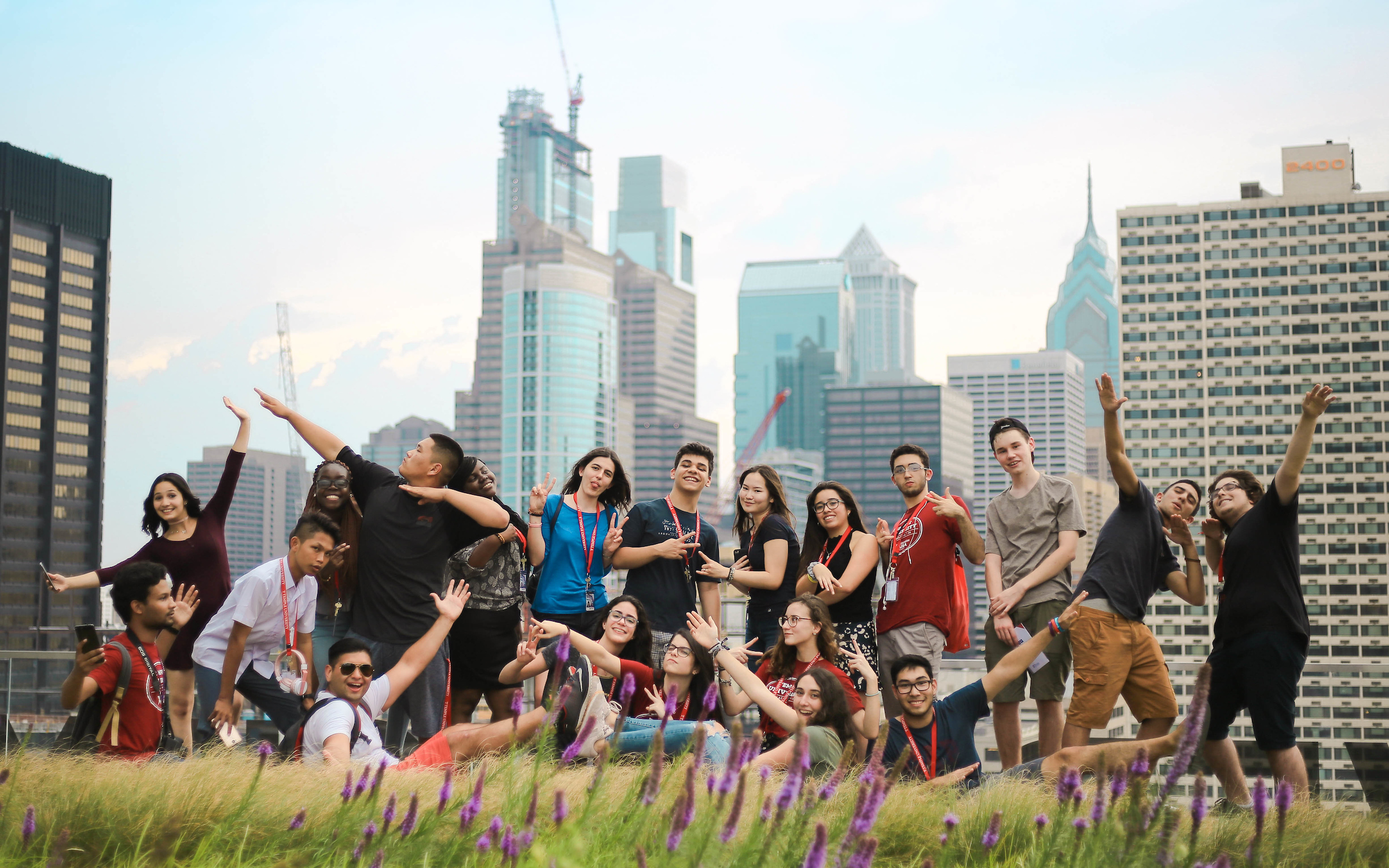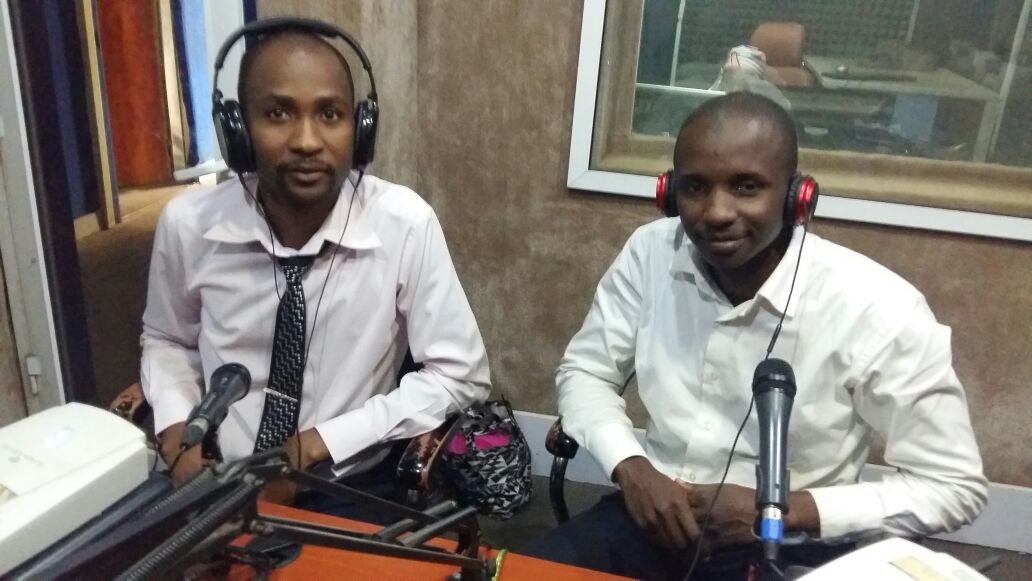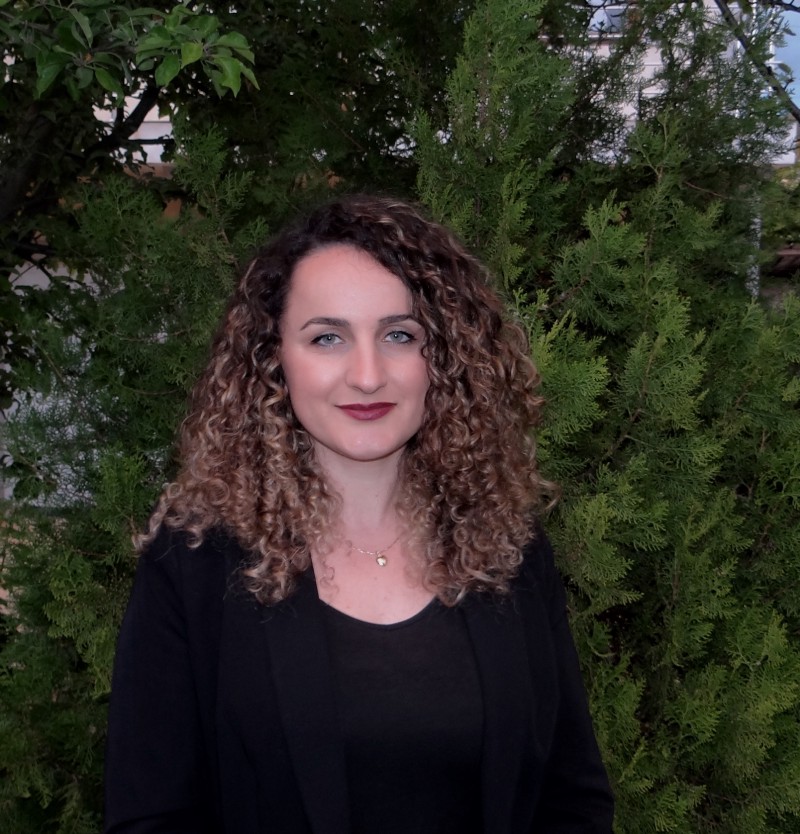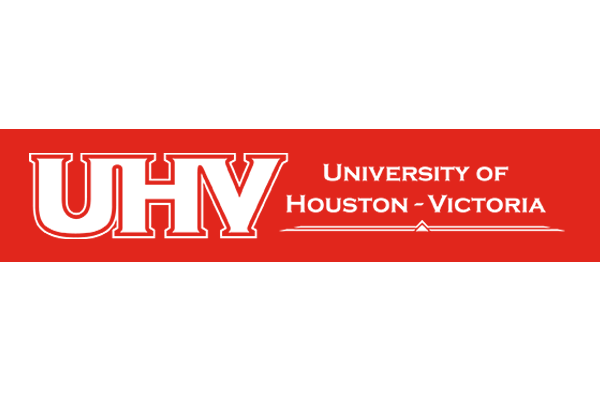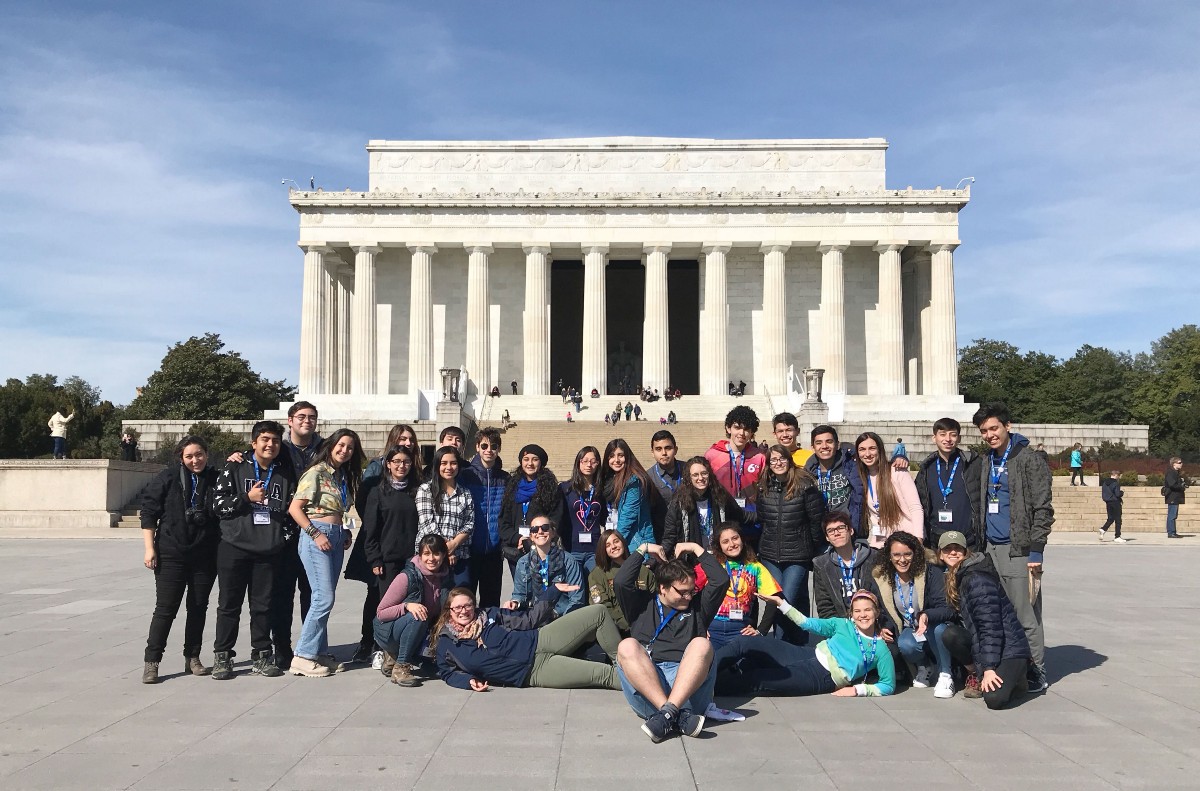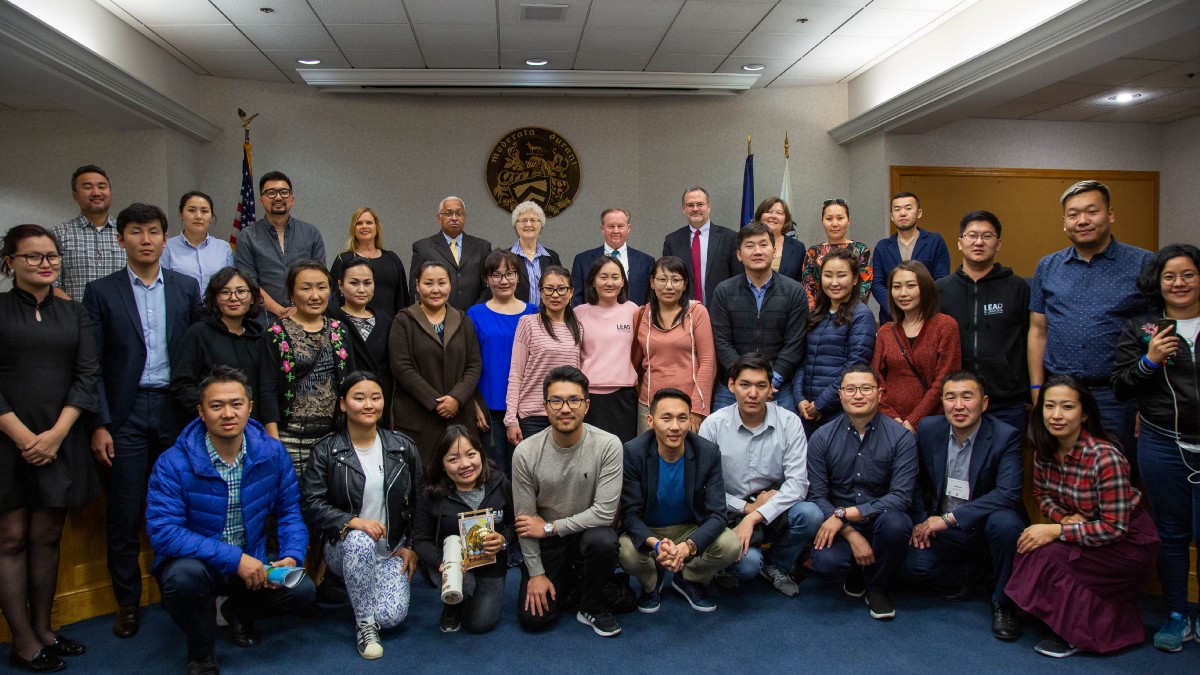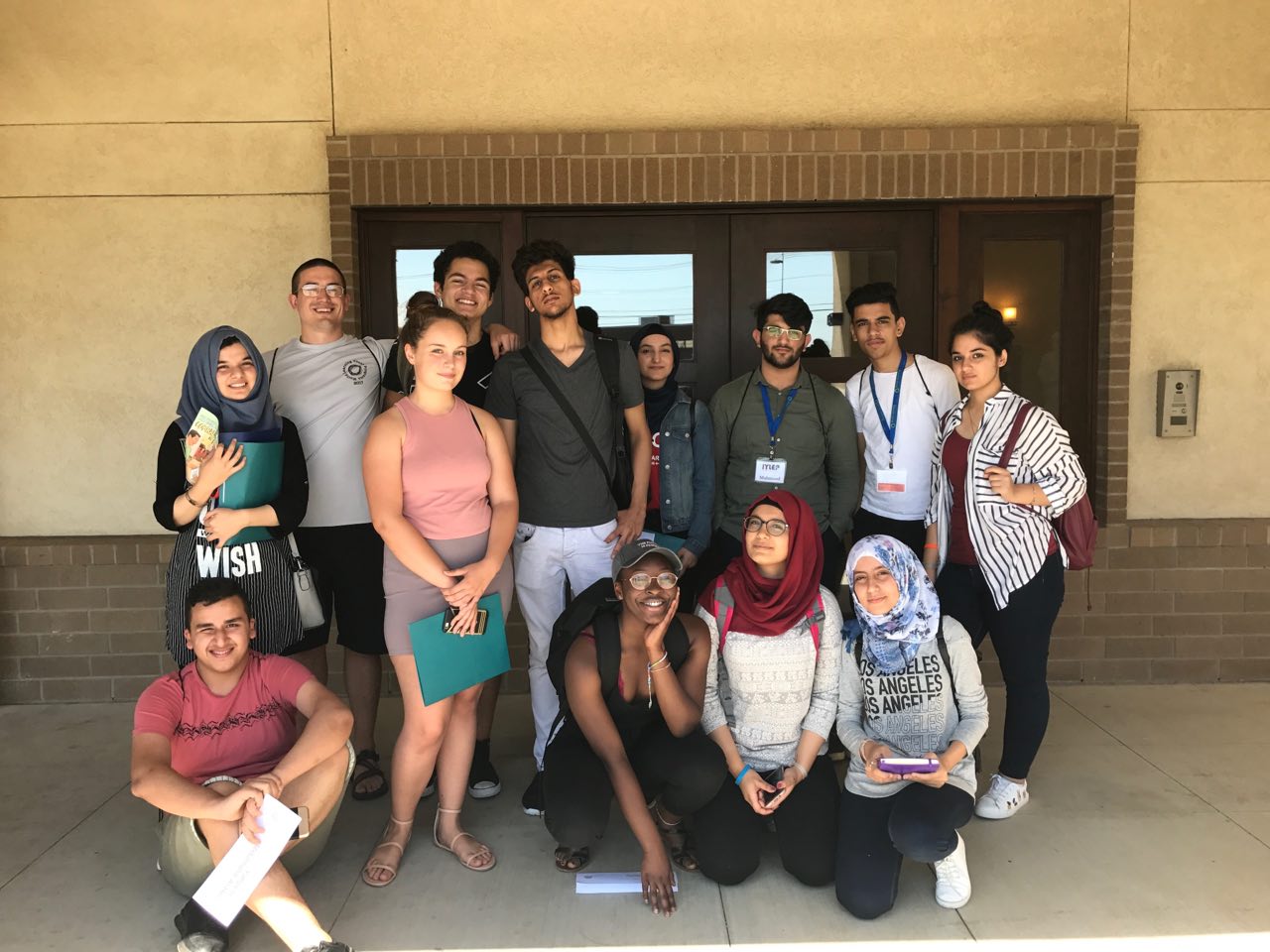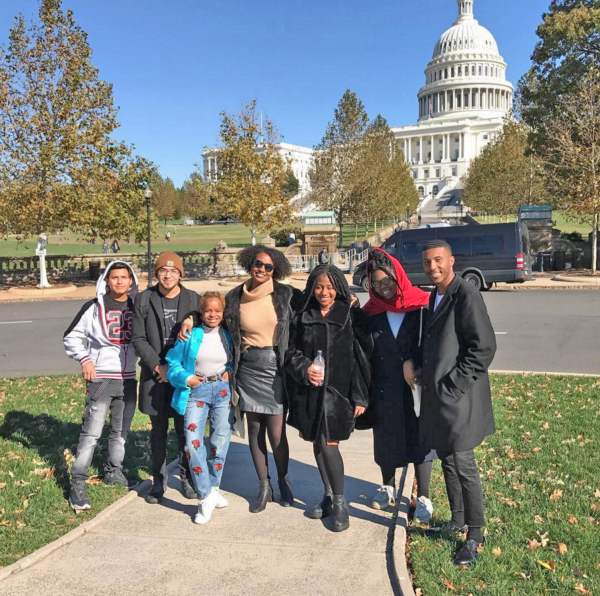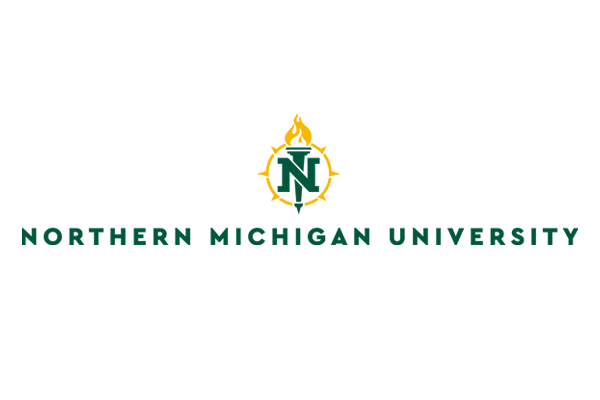-
What We Do
- WHERE WE WORK
-
About Us
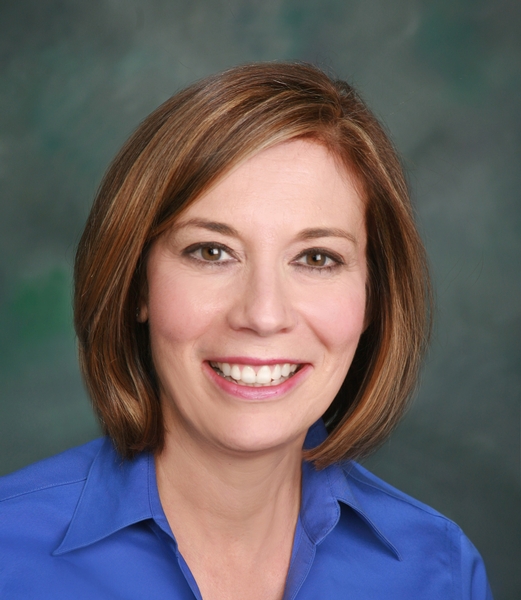 Welcome Message from Carol Jenkins
Welcome Message from Carol JenkinsFor more than 90 years, World Learning has equipped individuals and institutions to address the world’s most pressing problems. We believe that, working together with our partners, we can change this world for the better.
On my travels, I’ve had the opportunity to meet with many of those who have joined us in this mission. In Baghdad, we’ve trained more than 2,300 Iraqi youth who are already giving back at home. In London, our partners in the TAAP Initiative strongly believe that we are all responsible to practice inclusion. And in Vermont, our Experiment in International Living and School for International Training participants prove every day that they have the tools and the determination to change the world.
Please join us in our pursuit of a more peaceful and just world.
- Get Involved
Country: United States
Global UGRAD
Florida High School Student Learns from Peers with The Experiment Digital
Building Bridges from Cleveland to Taiwan
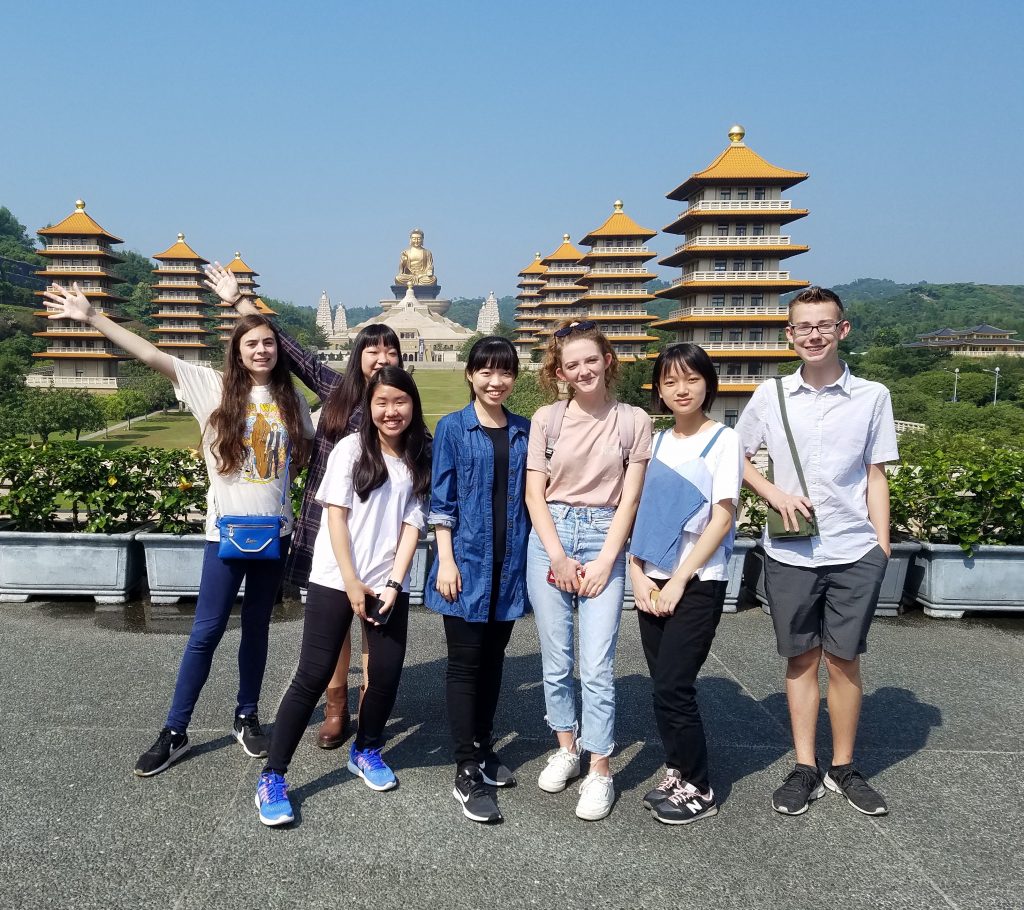
The On-Demand Youth Leadership Program (YLP) is a unique program created to serve the emerging needs of U.S. embassies by bringing high school youth and adult educators from around the world to the United States for intensive, substantive three-week exchanges. The program is sponsored by the U.S. Department of State with funding from the U.S. government and implemented by World Learning in partnership with organizations located across the country.
This piece was originally written and published by the Cleveland Council on World Affairs.
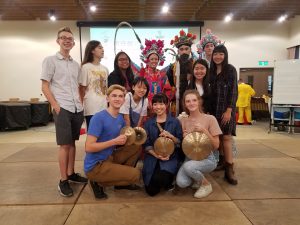
On October 19, Kjell Aspelin, Amanda Bendis, and Sydney Heckeler disembarked from a 12-hour flight. The three Cleveland high school students had just landed in Taiwan for a two-week trip to discover the country, its culture, and its music. For all of the students, it was their first time in Asia; for one of them, it was her first time outside of the United States.
This two-week exchange was part of the On-Demand Youth Leadership Program. It was organized by the Cleveland Council on World Affairs, sponsored by the U.S. Department of State through the Bureau of Educational and Cultural Affairs, and coordinated in partnership with the American Institute in Taiwan and World Learning in Washington, DC.
The trip was the reciprocal component of the AIT@40 Youth Leadership Exchange Program, which had welcomed 16 music students from the four top high schools in Taiwan to Cleveland in May, to celebrate the 40th anniversary of the American Institute in Taiwan. AIT is a nonprofit organization dedicated to fostering Taiwan-U.S. relations and to advancing the interests of the U.S. within Taiwan.
Showcasing the Best of Cleveland to Exchange Participants from Taiwan
Kjell, Sydney, and Amanda had participated in the May exchange by helping welcome the Taiwanese cohort, introducing them to U.S. culture, and joining them during various segments of their program. Over three weeks, students from Taiwan toured three world-renowned music conservatories in Northeast Ohio, joined a Cleveland Orchestra Youth Orchestra practice, learned about music therapy, and engaged in volunteering activities and leadership-building sessions, among other activities related to music and youth leadership.
Youth Leaders from Cleveland Explore Taiwan
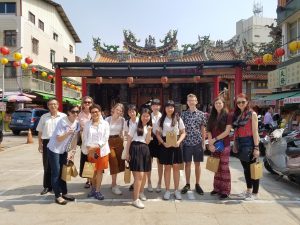
For the first time in the history of the U.S. Department of State’s On-Demand Youth Leadership Program, an outbound component was included to provide an opportunity for U.S. students to travel abroad. Six months after making friends with the Taiwanese students in Cleveland, Kjell, Sydney, and Amanda reconnected with students in all four Taiwanese cities represented in the program: Hsinchu, Taichung, Koahsiung, and Taoyuan.
During the program, the U.S. students stayed in the Taiwanese students’ homes, visited their schools, and participated in music-related service learning projects. The students from Cleveland also learned how to make dumplings, visited local temples, and tried their hand at indigo dyeing. They participated in music-themed activities and practiced with a Taiwanese school orchestra, learned to play the Chinese zither, and performed in a Taiwanese opera.
At the end of the program, the Taiwanese and U.S. students came together to perform a joint concert, ending with a choral rendition of the song “A Whole New World,” from the Disney movie Aladdin. As all 19 exchange program students congregated on stage for their last song, the audience was touched by the underlying message about the power of global connections to change the world and broaden perspectives. The students picked the song as a representation of their exchange program experience together.
Global Connections, Local Impact
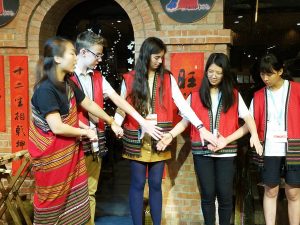
The program had an impact on both sides. Taiwanese students who had previously not held much interest in the U.S. were now preparing for the English language exams needed to attend U.S. universities. In recent years, interest in the U.S. has waned among Taiwanese youth. Renewed interest in the U.S. among the next generation of Taiwanese leaders can be a critical relationship-builder in a region where this is particularly important for U.S. interests.
The students from Cleveland were similarly impacted. Sydney said that the trip inspired her to pursue a career in international relations, and in fact she wishes to apply to the National Security Language Initiative for Youth study abroad program to return to Taiwan. She also plans to stay connected with who she now sees as lifelong friends in Taiwan.
“Taiwan was a life changing experience for me,” Sydney said. “I had such an amazing, unbelievable, wonderful time getting the opportunity to do things I’ve never done or seen before, and being able to make really close friends. I think that Taiwan is a place I would love to return to very soon, either for my future career or to visit my friends!”
Celebrating the Importance of Virtual Exchanges on National STEM Day
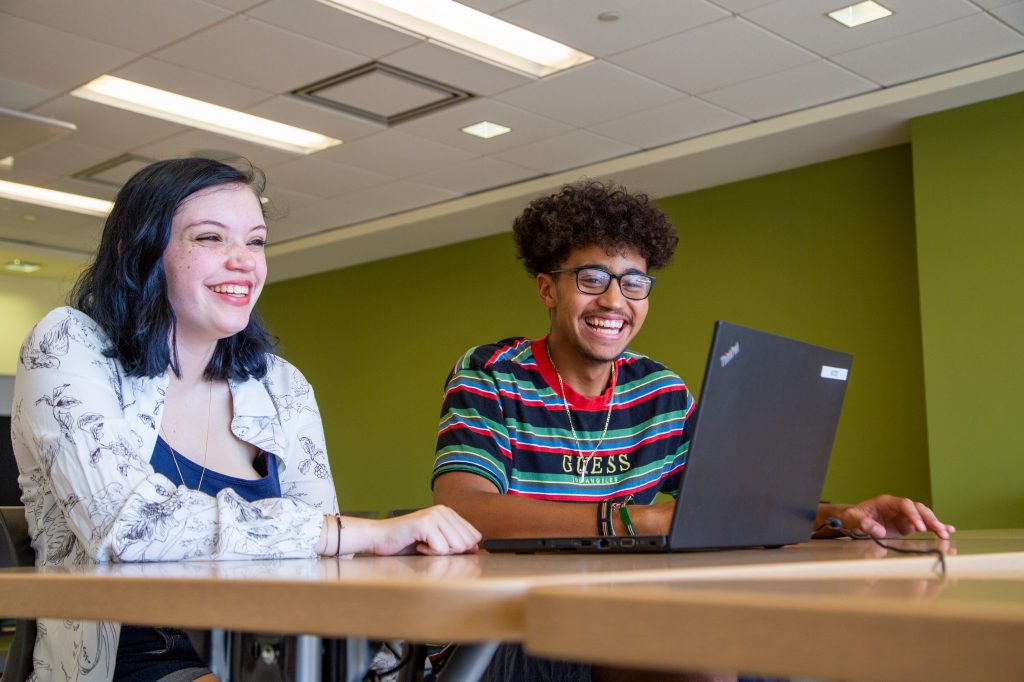
By World Learning Program Associate Katya Murillo and Intern Taieb Cherif
Climate change, food security and sanitation, healthcare, and gender equality are just a few of the many grand challenges countries across the globe face today, and in an increasingly global world we recognize that we must work together to solve them creatively. But how?
On this National STEM Day, World Learning recognizes the power of STEM education as a driving force of change. In Syria, Ethiopia, and Algeria among others, our STEM programs have transformed the lives of young people by exposing them to new career opportunities and experiences. Last month, World Learning launched a new program that will continue to use STEM education as a driving force of change: The NextGen Coders Network (NGCN).
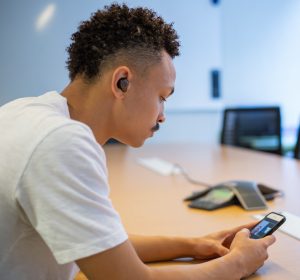
This virtual exchange program will bring together university students and young professionals from Iraq, the Palestinian Territories, and the United States through “hackathons.” From the comfort of their own homes, local libraries, or university campuses, participants will use coding skills to design solutions to their countries’ grand challenges. This format fosters greater cultural understanding between U.S. and international participants as they work both individually and in groups and collaborate across borders and professional backgrounds. At the end of each of the program’s four cycles, participants will have an opportunity to showcase their prototypes in a virtual “Ideas Festival.” NGCN is funded by the Stevens Initiative, which is sponsored by the U.S. Department of State, with funding from the U.S. government, and administered by the Aspen Institute.
Through NGCN, World Learning aims to highlight the importance of STEM education in finding innovative solutions to our world’s complex problems. The NGCN curriculum spans over 10 weeks and introduces participants to coding languages and concepts like project management and design thinking. It comprises 15 modules that cater to the different needs of participants, while developing and strengthening hard skills that will give participants the confidence to thrive in a technological age. This curriculum allows students to not only gain knowledge in STEM areas, but to think critically and resourcefully about the change they can create in the world.
World Learning knows the world’s grand challenges require diverse perspectives and backgrounds to work together and learn from each other’s successes and failures. It might even be that a solution already exists, and the next challenge is figuring out how to scale the solutions for all to benefit. That is why NGCN emphasizes the multidisciplinary nature of the virtual exchange, bringing together an international cohort of students and young professionals who do not exclusively come from a computer science background, as the name of the program might suggest. Thus, participants can benefit from the multiplicity of perspectives and areas of expertise.
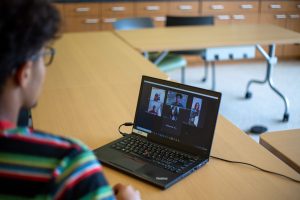
Solving global issues necessitates a deep intercultural understanding among people across the world. With more than 86 years of experience running international exchange programs, World Learning, through NGCN, aims to promote virtual exchange as a way to create a generation of globally and culturally aware citizens. Such programs have the capacity to empower young people and give them a new window to the world at low economic and social costs.
Reflecting on what drew him to this program, Aryan Wadhwani, a participant from Indiana University, expressed that he is fascinated by the idea of a virtual exchange and sees in it as an opportunity to “learn about the experiences of people from different cultures” and “come up with ideas to solve real-world problems.”
World Learning looks forward to seeing how Aryan and his peers will go on to drive change in their communities, countries, and beyond.
Alumni Voices: Carla Gurunian
How studying at a U.S. university helped her pursue new opportunities and build friendships across cultures
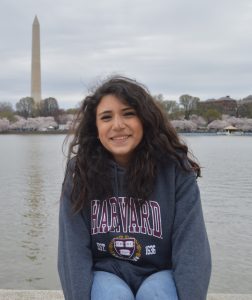
What is it like to travel across the world to study at a U.S. university? Every year, hundreds of young people from countries ranging from Albania to Zimbabwe find out firsthand as participants in the Global Undergraduate Exchange Program (Global UGRAD).
Since 2008, World Learning has administered Global UGRAD, which is sponsored by the U.S. Department of State with funding provided by the U.S. government. This international exchange program provides young people an opportunity to share their cultures while also exploring the culture, values, and educational system in the U.S. Through participating in community service, professional development, and cultural enrichment activities, they become leaders in their professions and communities.
Carla Gurunian is one of those young leaders. As part of the 2018–2019 Global UGRAD cohort, Gurunian traveled from her native Lebanon to study at Fairleigh Dickinson University in New Jersey. During her stay, she made friends from all over the world, explored U.S. cities from New York to Las Vegas, and gained new confidence and insight for her future career. Gurunian shares her experience in the following essay that’s been adapted from Global UGRAD’s blog, the Global Gazette:
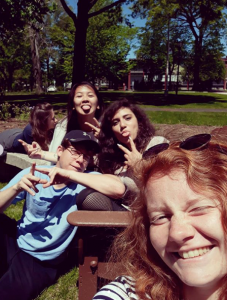
I remember sitting exactly where I am right now, almost two years ago, anxiously typing into a blank page why I was worth taking a chance on. Today, I am here to write about why it was all worth it.
Throughout my life, I was the girl from the neighborhood with massive dreams but no realistic way to achieve them. As my childhood friends wandered off to the best private colleges in the country, I was exhausting myself to get into the hardest one to get into: the one I could afford.
When I first heard of the Global UGRAD Program, I was in my first year at university. I recall starting the application and never completing it because something kept telling me that this kind of thing does not happen to me. A year later, the scholarship kept resurfacing, popping on my screen, in class, and through my professors. I decided to take a shot, thinking I had nothing to lose.
Every Global UGRADer remembers the day they got their placement. I checked my email first thing every morning until that one day when notice finally came that I was going to Fairleigh Dickinson University in New Jersey. I was going to live minutes away from the most beautiful city in the world and all of this was being granted to me just because a team of strangers believed in me. It was not until I landed in New York that I began to believe it was happening.
Education and Opportunity
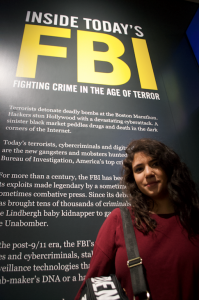
You hear about it, read about it, see it in movies but will never understand the land of opportunities until you experience it yourself.
I have been passionate about criminology for many years. But the major simply does not exist in Lebanon. Being in the U.S., where a retired detective could be my professor and teach me about crime was a true dream.
At least that’s what I thought until I met agents from the Federal Bureau of Investigation and Drug Enforcement Administration; visited a prison where I talked with convicts and heard their experiences; and spoke to an astronaut and a Pulitzer Prize-winning author. These were opportunities beyond my imagination. Their support and encouragement to pursue my passion for criminology boosted my confidence in a way that has changed my life. For the first time, I know what I want to do for my future, and I am not stopping until I reach my goal.
Friendship and Cultural Diversity
Nothing compares to the beauty of leaving a piece of yourself with every friend you make in every corner of the world.
The first friend I made in the U.S. was a Vietnamese girl from Vancouver. We went to New York City for the first time together, learning how to take the subway in the freezing cold, following the path of sunlight on the sidewalks with no idea where we were. Someone from a country I knew nothing about became family.
Then I went to Washington, DC, for the Global UGRAD summit and the entire world was in a room. The most unique individuals from around the globe were right there for me to meet, laugh, and dance with. To learn so much about so many drastically different cultures only showed me how none of us are different at all.
A few months later, I was in tears to part with the dearest group of people to my heart from the U.S., France, Germany, Costa Rica, Kazakhstan, Nigeria, Serbia, Hungary, and so many more countries. I plan on visiting each one of them for they must be beyond marvel to have produced such outstanding people.
Travel Around the U.S.
Every single time you discover a new place, you discover a part of yourself that you did not know existed.
One of the greatest things I got to do in the U.S. was travel. During spring break, I went to Los Angeles and Las Vegas. To see the empires of entertainment and then go to Washington, DC — the empire of history and the American Dream — was necessary to this experience. I would strongly encourage future Global UGRAD participants to do the same. I also made the most out of New Jersey and visited New York City every chance I got.
The Aftermath
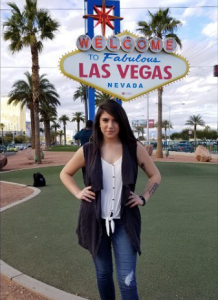
Among alumni, we have a saying: “Once a UGRAD, always a UGRAD.”
As exchange students, I believe every one of us knows what it’s like to come back home as a new person rediscovering their own country. Every one of us understands the bittersweet feeling of reuniting with family and friends after just saying goodbye to new friends and family.
Today, I am more ambitious and dedicated than ever, believing truly that we can achieve absolutely anything we set our minds and hearts to. I still speak to my friends and fellow Global UGRADs all the time. Many of the friends I made in the U.S. are going to be visiting me in Lebanon in the upcoming months and one already did, which makes it easier to accept that it’s a small world and family will inevitably cross paths, hug, and make memories again.
I am forever grateful to World Learning, the U.S. Embassy in Lebanon, and the U.S. Department of State. Now, it is time to go out there and change the world.
Written by Carla Gurunian, 2018–2019 Global UGRAD student from Lebanon at Fairleigh Dickinson University. This essay was originally published in the Global Gazette.
Five Weeks in the Life of Rassu Manandhar, an Environmental Researcher and Advocate
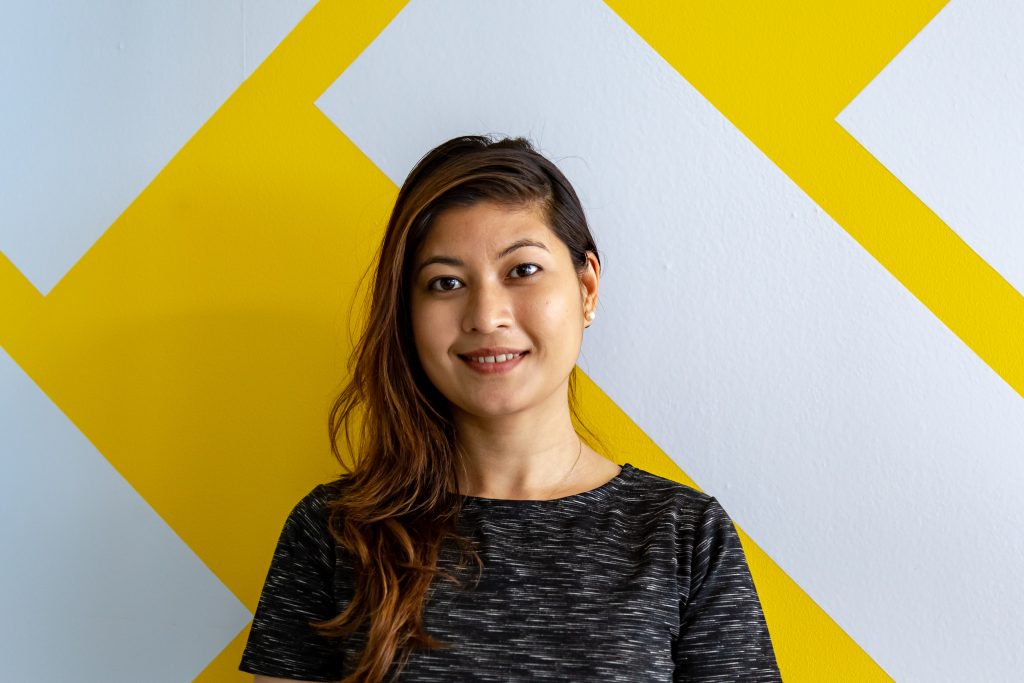
Rassu Manandhar is on a mission to save the environment in her native Nepal.
Home to the Himalayas and a rich biodiversity, the South Asian nation is extremely vulnerable to climate change. Its air quality has been rated as the fourth-worst in the world due to vehicle emissions and waste-burning activities. “It’s growing every day,” Manandhar says. “If people’s attitudes don’t change, it doesn’t change the environment.”
For six years, this environmental advocate has been working to do just that, studying air pollution in Pokhara city and leading community campaigns to create vehicle-free zones in the capital Kathmandu. Now, as program officer at the Alternative Energy Promotion Centre, she’s focusing on climate change.
But climate change is a global problem — and its solutions are global, too.
Seeking insight into how other countries are tackling climate change, Manandhar traveled to the United States this spring as part of the Professional Fellows Program for Governance and Society. Sponsored by the U.S. Department of State, the program brings professionals to the U.S. to exchange strategies and best practices and take part in fellowships at organizations across the country. World Learning implements the South and Central Asia component of the global program, working specifically with professionals from Nepal, India, and Pakistan.
Over the course of five weeks, Manandhar met with U.S. government officials to learn about policymaking and discovered U.S. culture through new friendships. Most importantly, she gained critical insights into global climate policy while working alongside experts at the World Resources Institute (WRI), a global research organization based in Washington, DC.
Follow along with Manandhar throughout her exchange program journey.
WEEK ONE
April 30
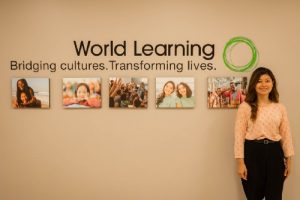
In late April, Manandhar — together with peers from Nepal, India, and Pakistan — began her program at World Learning’s headquarters in Washington, DC. During this first week, the fellows took part in workshops and briefings to learn about the U.S. legislative process and role of civil society. They also learned where they’d be placed for their three-week fellowships, many of which would be taking place in cities across the country.
Manandhar’s placement at WRI meant that she’d be staying in the nation’s capital for the duration of the program. Impressed to be working for such a renowned global research organization, Manandhar was looking forward to learning how WRI conducts research and prepares reports. She was also interested in learning more about U.S. culture, from its places, foods, and people, to its workplace environments. “The U.S. is always a good place to learn from,” she said.
May 2
After a few days of orientation, Manandhar started her fellowship at the World Resources Institute. Given her experience working on public campaigns to reduce air pollution, she was placed in the organization’s Governance Center with a cross-cutting role in air quality. Her first task? To conduct a literature review of how these campaigns are linked to global air quality policies.
WEEK TWO
May 10
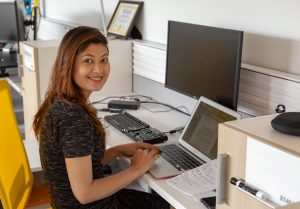
Manandhar’s first full week at WRI offered many opportunities to discover various aspects of U.S. work culture. Her fellowship happened to coincide with WRI’s biannual global meeting, which brings together staff from field offices all over the world. Manandhar was invited to attend the global meeting as well as other workshops on air pollution and climate change.
She was struck by how interactive those staff meetings could be in contrast to the lecture-style meetings that she’s more accustomed to attending. Some even included activities and games — one challenged employees to correctly sort items into compost, recycling, and trash — with prizes like water bottles. “I was very interested,” Manandhar said. “[The] activities were fun but at the same time we learned from them.”
May 11–12
Manandhar left DC to spend her first weekend in the U.S. exploring Philadelphia and New York with Rajani Tamang, another fellow from Nepal. Manandhar found the contrasts among the East Coast cities striking — from Philadelphia’s small city center to New York’s crowded megapolis.
WEEK THREE
May 16
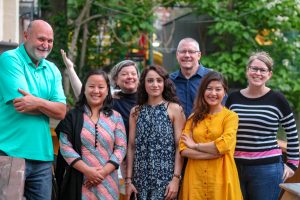
Sharing a meal is another great way to learn about a new culture. In week three, Manandhar and two other fellows (including Tamang) were invited to dinner at the home of Ron Munia, a volunteer who regularly hosts World Learning’s exchange program participants in Washington, DC.
Knowing that Munia had also invited some friends to the dinner party, Manandhar was a bit nervous. But she quickly felt at ease as the group chatted about their cultural difference and similarities over a delicious salmon dinner. “They made it very comfortable for us,” she said. “I like to meet new people and know about them. From that, we grow and we connect.”
Beyond U.S. culture, though, Manandhar was especially fascinated to learn more about Pakistani culture from her fellow program participant, Shaher Bano Abbasi, a women’s rights advocate. Manandhar says she didn’t know very much about women’s rights issues in Pakistan before the dinner party and was glad for the opportunity to learn more.
WEEK FOUR
May 22
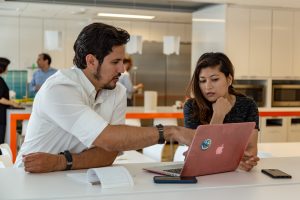
After two and a half weeks, Manandhar’s fellowship at WRI was coming to an end. She had been working diligently on her literature review with the help of her supervisor, Seth Contreras, who had offered advice on where to look for information and how to organize the report. He also offered insights from his own work at WRI. “It helped me to think how I can learn from them in implementing my campaigns and advocacy,” she said.
Manandhar also made a number of other professional connections throughout her three weeks at WRI. As a member of her Nepali organization’s core working group related to the Green Climate Fund, she was especially happy to meet a counterpart at such a renowned organized as WRI. “In Nepal, there are only a few organizations working in air pollution,” she explained. “So, if we can collaborate later and develop some projects and programs it is very important to make the connections.”
WEEK FIVE
May 29
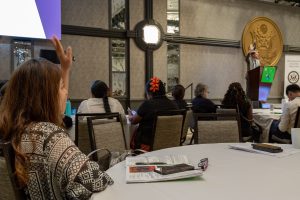
At the end of their fellowships, the rest of her South and Central Asian peers in the Professional Fellows for Governance and Society rejoined Manandhar in Washington, DC. For their final week of the program, they attended the Professional Fellows Congress, which gathers more than 200 fellows from 48 countries to develop leadership skills and build international networks.
Manandhar had an especially interesting experience in making new connections at the congress thanks to Vladimir Spencer, program manager at World Learning. He was hosting a dinner party at his house later that week and challenged the fellows to make at least one new friend at the congress who would accompany them to the party. Manandhar spent the conference chatting with fellows from all over the world and ended up befriending an environmental expert from Turkey. “That was interesting as well, to connect with people differently,” she said.
POST-EXCHANGE
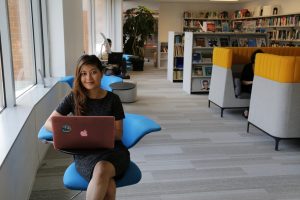
Manandhar has been quick to share what she learned in the U.S. since she returned to Nepal. As part of her project plan to educate the public on the importance of environmental sustainability and advocate for change, Rassu talked about the experience with the rest of the staff at the Alternative Energy Promotion Centre, and she’s already planning to use the literature review that she wrote at WRI to inform the future campaigns she works on to encourage Nepali youth to protect the environment. She’s also planning to write an article about her experience for the Kathmandu Post.
As she says, that experience was more than worthwhile. “It was good to know how the other countries are doing and to know how the World Resources Institute thinks,” she says. Moreover, she was grateful for the opportunity to experience the U.S. by living in it — commuting to an office, working 9 to 5, walking the city streets, and participating in the culture. “My perception has changed,” she said. “I found [people in the U.S.] very humble, I really did, and I feel like I have learned things from them personally.”
Learn more about the Professional Fellows for Governance and Society, South and Central Asia program.
WRI is a global research organization that spans more than 50 countries, with offices in the United States, China, India, Brazil, Indonesia and more. More than 700 experts and staff work closely with leaders to turn big ideas into action to sustain our natural resources — the foundation of economic opportunity and human well-being. WRI’s work focuses on six critical issues at the intersection of environment and development: climate, energy, food, forests, water, and cities and transport.
Advice for the Future Girls of WiSci
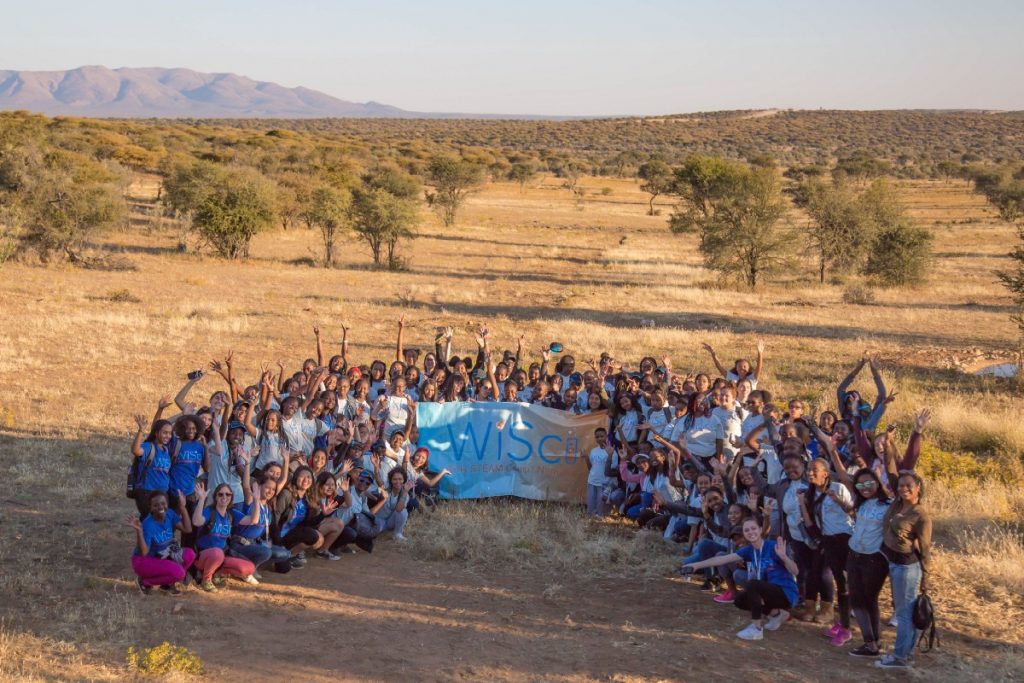
Next week, girls from the United States and Ethiopia will be gathering in Addis Ababa for the 2019 Women in Science Girls’ STEAM Camp, where they’ll explore how to use technology to build a safer, more secure world, all while developing their leadership skills and making new friends from other cultures.
Also known as WiSci, the camp brings together teen girls from the U.S. and around the world to explore STEAM (Science, Technology, Engineering, Art & Design, and Mathematics) subjects under the mentorship of professionals. WiSci is a private-public partnership between the U.S. Department of State’s Secretary’s Office of Global Partnerships, the UN Foundation’s Girl Up Initiative, Intel, Google, Microsoft, NASA, and the American Society for Microbiology. The WiSci camp in Ethiopia is implemented by World Learning.
What can this year’s campers expect from their WiSci experience? We turned to the experts for advice: Girls — and an adult mentor — from last year’s camp in Namibia with high school girls from Namibia, Ethiopia, Kenya, eSwatini, and the U.S. (Check out stories from last year’s camp). Read ahead and get inspired!
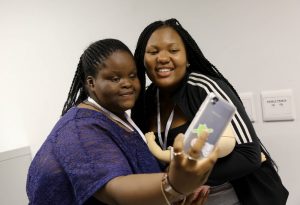
Samkay, 16, eSwatini
This camp is the best thing that has ever happened to me. To any girl who would want to join this camp, let me just say to you that it would be a great opportunity for you to see this camp, experience all that I’ve seen, and learn a lot of new things because these people right here are bringing opportunities to us that we couldn’t get back home. So please come.
Abby, 16, Kenya
I would tell girls that WiSci is not anything you would expect. It’s actually much better. And bring snacks.
Hildana, 16, Ethiopia
My advice would be to not be afraid and to start socializing because there’s a lot you can learn from your peers, just as much as you can learn from your teachers. I got to experience that here.
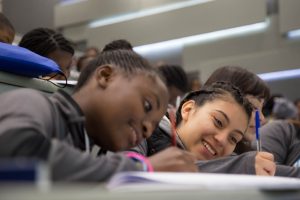
Jennifer, 17, U.S.
Take risks. Speak to as many people as you can. Take advantage of every opportunity that faces you at WiSci — even leaving home. It’s a great opportunity to span our wings so don’t be afraid to go. And have fun!
Nokwanda, 16, eSwatini
Today I heard this very inspirational quote that says, “Don’t tell me the sky is the limit when there are footprints on the moon.” So, as the quote says, don’t set the limit for yourself.
I’d rather that [a future WiSci camper] failed trying rather than fail without trying at all. If you don’t think your application is good enough, that’s fine. Try it out because you never know what’s ahead. Everything happens for a reason. It’s going to work out. Persevere because we need more strong women in the world. If a girl from Swaziland, one of the smallest countries in the entire world, could make it to Namibia and showcase who she really is then there’s no reason why you can’t.
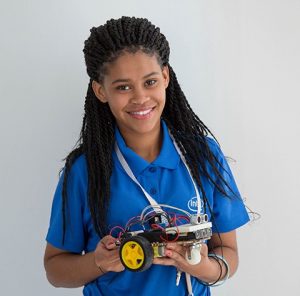
Jo-Ann, 16, Namibia
Girls should know that when someone introduces the word STEAM to them, it doesn’t necessarily mean male. It means female, too. Whatever a man can do, a woman can do, and they can do it even better.
So, I would advise girls to join the camp because at the camp it’s not just about STEAM. It’s about STEAM and about building yourself as a person. For example, in the Girl Up classes, we were taught how to see yourself with a positive body image. And those things help you grow as a person.
Bethany, 17, Ethiopia
I would tell girls that there’s nothing to be shy of. They can do it. We can lead. Go girls!
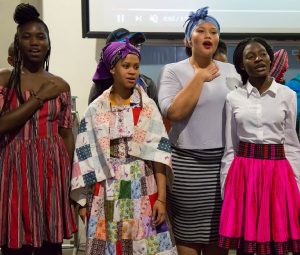
Zoe, 17, Namibia
I’m a very confident person, but this camp boosted my confidence even more, like over the border. There are a lot of shy girls here, but during the course of the camp, these classes helped them to speak up more, to say what they feel, to express themselves in the way that they are most comfortable.
In some villages, girls are not allowed to speak up on anything. So I feel like this camp teaches us how to advocate, where to advocate, and when, and it teaches us how to be confident. I feel like this was a really uplifting program, so I would advise girls to attend so they can benefit as we benefited.
Bezawit G., 16, Ethiopia
Don’t stress much because nobody really knows what they’re doing before they’re here. People may say, “I’m not good enough” or they’re afraid to face other cultures or something. Be open-minded. Don’t be afraid to try.
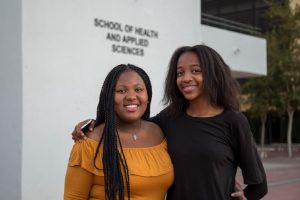
Anele, 16, eSwatini
Be open. I mean open. Come here and make long relationships. Make relationships that matter. Make relationships where you can say, “I was at camp and we created this app” or “I was at camp and we created this particular project which, now that I’m successful, I can actually implement it outside of just my village or my school.” Those are the kinds of relationships I’m glad I’m making right now. Make friends but make significant friendships that can go on forever.
Renata, 16, U.S.
This is the most amazing experience and you need to take every opportunity that you can because they’re worth more than you can imagine. Even the flight! Make as many friends as you can. Don’t be afraid to switch tables to be with different people. Eat the food. Try to be as happy as you can and don’t focus on the little things that are bothering you because it’s just so big picture what we’re doing here. We’re advancing women in STEAM, which is so cool. It’s such an amazing program.
Onome Ofoman, Software Engineer, Google
Women in Science (WiSci) Girls STEAM (Science, Technology, Engineering, Art & Design, and Mathematics) Camp is a private public partnership (PPP) between the U.S. Department of State’s Secretary’s Office of Global Partnerships, the UN Foundation’s Girl Up Initiative, Intel, Google, Microsoft, NASA, and the American Society for Microbiology. In 2018, the camp brought approximately 100 high school girls from the African continent and the U.S. together for 13 days in Namibia to explore the STEAM fields and access mentorship opportunities and leadership training.
Five Inspiring Workshops and Performances from the Arts Envoy Program
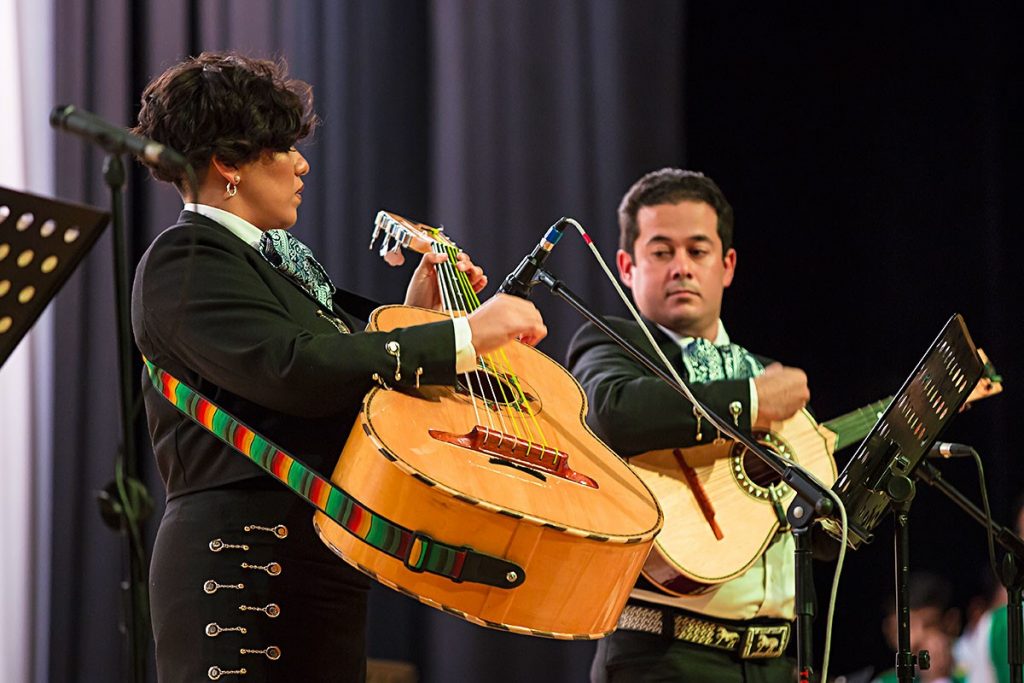
Art is one of the most powerful ways to communicate across cultures. When you’re expressing yourself through music, dance, visual arts or any other artistic medium, language barriers fall away.
The Arts Envoy Program — which is sponsored by the U.S. Department of State with funding provided by the U.S. government — sends artists and cultural experts from the United States abroad to share U.S. culture and society through their work. Arts Envoys work with the U.S. Department of State and individual embassies in each country to plan short programs that often include performances, workshops, seminars, and more.
World Learning has seen a lot of amazing projects since we began implementing the Arts Envoy Program on behalf of the State Department in 2016. Here, we’re highlighting a few of the many inspirational projects from the past year:
Mariachi Champana Nevin
Destination: Turkmenistan
Program title/theme: Southwestern American Music
Mariachi Champana Nevin traveled to Turkmenistan with one overall objective: for the people of Turkmenistan to get to know more about the U.S. through goodwill and openness. Known for its unique style of classical mariachi music, the ensemble performed and held master classes in the country’s capital city while also taking in performances by Turkmen artists. For their final performance, Mariachi Champana Nevin joined with the Turkmen National Orchestra to play pieces of mariachi and traditional Turkmen music that they had arranged for one another.
According to Mariachi Champana Nevin founder Jeff Nevin, the group used every opportunity to emphasize the multiculturalism of the U.S. — telling their audiences that not only were they U.S. citizens playing Mexican music, but that the U.S. embraces and identifies with music from all over the world. In a World Learning survey at the end of the program, he remarked that cross-cultural exchanges like the Arts Envoy Program are critical.
“If more people around the world could meet more people from different parts of the world, then I truly believe that there would be less conflict,” he wrote. “When people meet they begin to understand one another better … and music is a profound medium through which these connections can be made. Musicians understand one another, we don’t even need to speak — we simply play our music, they play theirs, we can perform together. That erases the boundaries that build up when people don’t communicate.”
Heather Maxwell
Destination: Togo
Program title/theme: Martin Luther King, Jr. and Civil Rights: The Music of the Struggle
Heather Maxwell knows what it means to share culture through music. This accomplished singer and songwriter is an ethnomusicologist and host of the “Music Time in Africa” program on Voice of America. In February, she traveled to Togo for a series of performances across the country honoring Martin Luther King, Jr. and Black History Month.
Hosted by the U.S. Embassy in Lomé, each performance was different in style — such as a formal concert at the U.S. Embassy and more informal performances at local schools — but came paired with an art exhibit about the U.S. Civil Rights Movement. Backed by a local choir, Maxwell performed a repertoire of songs that were important during the movement, taking time to explain each song’s personal and cultural resonance. While she spoke primarily in French, Maxwell also sang one song in Ewe, the language of one of Togo’s major ethnic groups.
Since her return to the U.S., Maxwell says she’s started playing a lot more Togolese music on her radio show and continues to build relationships with musicians and DJs from the West African country. These connections made her Arts Envoy experience a particularly rich one, she said in a program survey. “There was a truly wonderful exchange happening musically.”
Alby Gyimah-Boadi
Destination: Nigeria
Program title/theme: Transforming Youth Through Art
Not only does art help people share their lives across cultural barriers, it also has the power to heal. In December, Arts Envoy and art therapist Alby Gyimah-Boadi traveled to Nigeria at the invitation of the U.S. Embassy in Abuja to help people affected by conflict learn how to express themselves through art.
Gyimah-Boadi, a licensed graduate professional counselor, tailored her activities to each community she visited. For example, at a refugee camp for those who have been displaced by Boko Haram, Gyimah-Boadi taught women and children how to create strength dolls “to show that they had the strength within them to have gone through all that they did and survived.” She then met with incarcerated men and youth to explore identity by designing masks depicting how others see them and how they would like to be seen. “It seemed like this was the first time they had been given a chance to express themselves and have their side of the story told via art form,” she says.
Sharing that experience with people was exactly Gyimah-Boadi’s goal for the program. “Coming from a developing country (Ghana), I knew I always wanted to be able to take my profession back home and to other places that did not easily have access to this service,” she says. “Being in Nigeria and interacting with the various communities definitely was an eye opener in what things I need to consider when working with communities outside of the western hemisphere. This trip really broadened my horizons and made it made me more aware of how important it is to meet individuals where they are in terms of their healing.”
REALITY
Destination: Panama
Program title/theme: Theater and Contemporary Dance
In March, REALITY traveled to Panama to perform at the Festival Internacional de Artes Escénicas as Arts Envoys. But for the Los Angeles-based contemporary dance group, which is led by acclaimed choreographer, writer, and director David Roussève, this trip was more than just a performance abroad. “We were re-inspired,” says Leanne Poirier, a member of the group.
The Arts Envoy Program gave REALITY an opportunity to connect and share their passion with the people of Panama. They explored the city and went dancing for fun with their new friends. They led a workshop at a local dance academy, where Roussève also held a discussion with jazz students. They also held workshops at Enlaces, an after-school program for at-risk youth.
Poirier says the latter experience was particularly powerful. REALITY taught the Enlaces students a dance phrase from their piece and worked with them to choreograph their own duet phrases. Poirier was paired with a dancer named Luis, who spoke no English while she spoke little Spanish. But the duo learned to communicate through movement. “That inspired me to want to work more with communities in the U.S.,” she says. “Working with Luis was one of the most special moments of my career that I will never forget!”
The Myrna Clayton Experience
Destination: Namibia
Program title/theme: Promoting U.S. Culture Through Jazz Appreciation
Myrna Clayton believes that jazz has the power to cultivate the cohesion and unity that makes the world a better place. “Jazz is more than music — it is an example of how to get along while maintaining one’s uniqueness,” says the singer/songwriter and bandleader of The Myrna Clayton Experience. “Jazz is organized free expression and creative improvisation while remaining cohesive and unified.”
In March, The Myrna Clayton Experience traveled to Namibia to share their passion for jazz as Arts Envoys. Organized by the U.S. Embassy in Windhoek, the 10-day trip included interviews with Namibian media as well as seven performances across the capital city including public concerts, a concert at the U.S. ambassador’s house, jam sessions with local musicians, and workshops at an orphanage and a special needs school. As Clayton explains, their goal was to highlight jazz as an expression of U.S. history and a model for how others can build unity through individuality.
Each performance met with a tremendous response. “Everyone I met responded with joy — smiling and dancing,” Clayton says. “Wherever we performed crowds gathered.” Children ran on stage to dance and try out the band’s instruments, while diplomats and other officials sang along to the music as well.
Though the exchange is over, its memory will be preserved: During their trip, The Myrna Clayton Experience held an impromptu recording session with local professionals. Together, they created a song (which is still in development) that is both Namibian and American — and perhaps the ultimate expression of cross-cultural exchange.
The Arts Envoy Program is sponsored by the U.S. Department of State with funding provided by the U.S. Government and administered by World Learning.
10 Ways International Exchanges Cultivate Global Citizenship on College Campuses
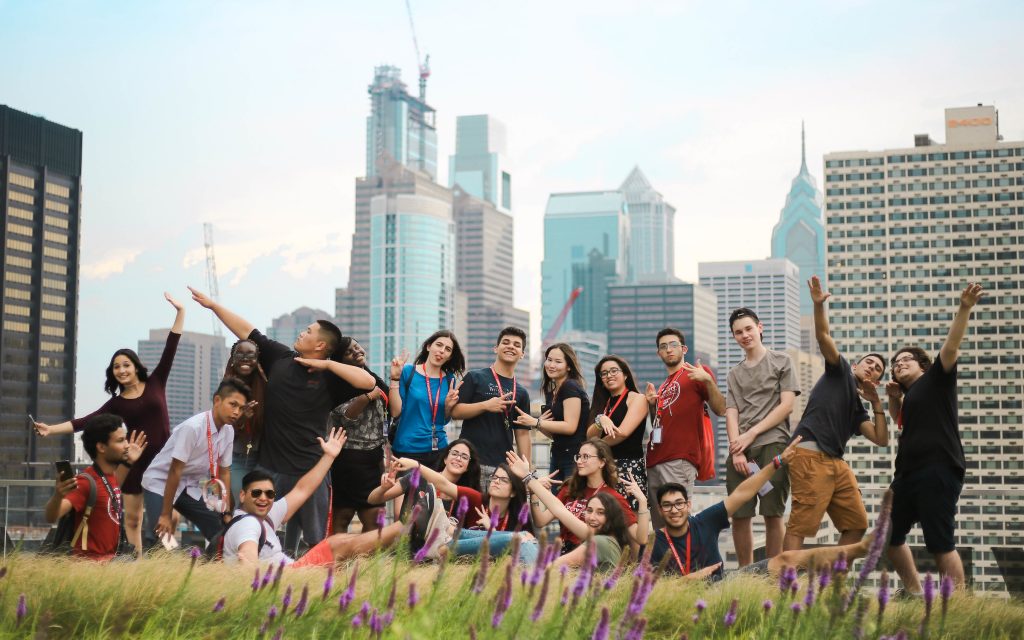
Educators know better than anyone the value of global citizenship in an increasingly interconnected world. That’s why higher education institutions across the United States — in partnership with World Learning — are making it a priority to develop their students’ global competence.
“You need to be a global citizen to be an informed professional,” says Janelle Rasmussen, director of international training and professional development at Montana State University.
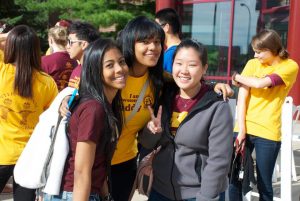
Many careers now require people to work internationally, she explains — and research indicates, too, that businesses need employees with intercultural skills to compete on a global scale. “It’s really important for our students to gain that intercultural competence so that they can succeed when they leave Montana,” she says.
Global citizenship also has returns beyond the working world. At Bennett College, a historically black college for women in North Carolina, “the internationalization of our campus is essential,” says Kelly Mallari, director of the college’s Center for Global Studies. “Students need to know that their voice is important, their vote is important, and that if they don’t understand what’s going on then they’ll never have an accurate picture of what needs to happen in their country.”
But it can be a challenge for higher education institutions to achieve their goals of cultivating global citizens. Typically, institutions do so by expanding curriculum to include international perspectives, ensuring faculty develop their own global competence, hosting international students on campus, and sending U.S. students to study abroad. According to the latest Open Doors survey, though, international student enrollment has declined for the second straight year — particularly among institutions that aren’t well known overseas or based in major U.S. cities. Meanwhile, many schools simply don’t have the funding or capacity to provide study abroad programs for U.S. students.
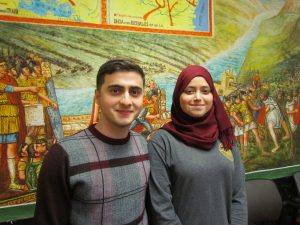
World Learning is committed to helping U.S. colleges and universities address those challenges. As implementer of the Capacity Building Program for U.S. Study Abroad, funded by the U.S. Department of State, we help institutions create, expand, or diversify their study abroad programs. Our sister organization, School for International Training, provides study abroad programs on all seven continents for undergraduates from more than 200 colleges and universities.
Academic exchanges are also critical to helping institutions infuse their campuses with an international outlook. “When you bring international perspectives to a campus, you broaden students’ horizons so that they can start to break down stereotypes and understand that their world bubble is malleable — they can push and change it in different ways,” says Amy Fisher Bruey, project director and university relations manager at World Learning.
As implementer of these academic exchange programs, World Learning recruits a diverse set of international students, prepares them to be cultural ambassadors, and places them in schools across the country to share their cultures and learn about U.S. culture. We aim to make it easy for U.S. colleges to participate, taking care of immigration processing, stipends, and more.
We know that these exchanges can transform a campus and its community. But don’t just take it from us. Here, some of our university partners share their thoughts on the importance of academic exchange.
1. Making International Enrollment Possible
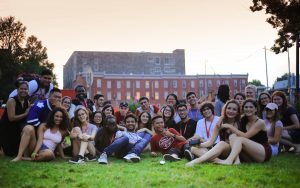
For schools that aren’t internationally known brands like Harvard or Stanford, it can be tough to attract full-time international students. Bennett College, for one, has seen sparse international enrollment in recent years, with none in 2014 and just one student the following year. When Mallari joined as director of its Center for Global Studies two years ago, she made increasing the presence of international students on campus a key goal of her department.
Mallari says partnering with World Learning as a host for students in the Global Undergraduate Exchange Program (Global UGRAD) — sponsored by the U.S. Department of State with funding provided by the U.S. government and administered by World Learning — helped make it possible to achieve that goal. Participating in the program ensures that Bennett will have international students from all over the world on its campus each year. Now, instead of one international student (or none at all), Bennett College will host four this year.
“There’s been a drastic increase in international student count on our campus,” Mallari says. “The students we get through Global UGRAD are not only here to learn but they’re also prepped amazingly and ready to participate on campus and share their culture and life with us, which is something I could never thank them enough for. So being able to rely on that from Global UGRAD has been tremendous.”
2. Creating Cultural Ambassadors
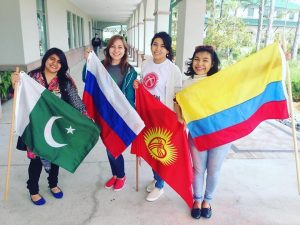
Global citizenship begins with an exposure to new ideas, people, and cultures. U.S. government-sponsored academic exchange programs — such as Global UGRAD — are intentional about creating cultural ambassadors. After being selected through a competitive process based on academic excellence and leadership potential, Global UGRAD students take a virtual skills development course to prepare them for their stay in the U.S.
Lisa Kyle, international exchange coordinator at Wayne State University in Michigan, says that this kind of preparation makes a difference. She recently took a terrestrial ecology class alongside a Global UGRAD participant from Israel. She noticed he spent a good deal of time talking to classmates about where he was from and answering questions about his culture. “It was an eye-opening experience,” she says.
3. Providing New Perspectives on Global Issues
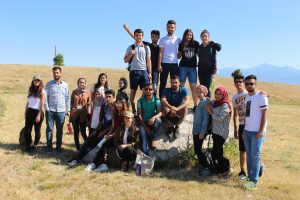
It’s been nearly a decade since the University of Southern Indiana last hosted Iraqi students on its campus as part of the Iraqi Young Leaders Exchange Program for Undergraduate Students, which is sponsored by the U.S. Department of State and the U.S. Embassy Baghdad. But for Heidi Gregori-Gahan, associate provost for international programs, the memories of that experience remain strong. “I’ve been in this field for over 35 years now and I can count on one hand the experiences that I’ve been involved with that truly have changed people’s perspectives in profound ways,” she says.
Gregori-Gahan says that having young Iraqi students on campus for a month, sharing their cultures and experiences, helped students and staff alike put a human face on a country that they had previously only associated with war. “If the vast majority of our American students can interact with our international students on campus and understand a little bit more of their experiences and their realities, then the next time they hear something about that country in the news, it has so much more meaning for them,” she says. “I think it just makes the world seem so much smaller when you see that.”
4. Enriching the Academic Curriculum
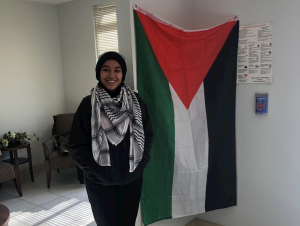
Beyond the many informal ways academic exchanges transform the learning experience, they can also drive more formal changes. Last year, a Global UGRAD scholar named Serena inspired the development of an entirely new course at Bennett College.
As the first student that Bennett hosted from the Palestinian Territories, Serena was frequently invited to speak at campus events to provide context to events in the news. “Her conversation really struck a chord with a lot of the people who deal in the disciplines of politics, socioeconomics, and religious studies at our college,” Mallari says.
As a result, the university began developing a course that it hopes to add to the curriculum in spring 2020, examining the issues between Gaza, the West Bank, and Israel. “International students provide an amazing perspective on their country, their culture, their faith if they belong to a different faith group than ours,” Mallari says. “What they bring to the campus, you can’t buy those kinds of things.”
5. Inspiring U.S. Students to Pursue Opportunities Abroad
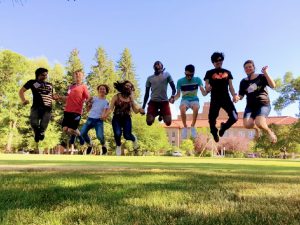
Living abroad is one of the most effective ways to develop intercultural competencies. It can also be one of the most intimidating. Wayne State University has a sizable international population, but most of its undergraduates hail from within 100 miles of Detroit. Though they might have family ties abroad, they often don’t have much experience with other cultures. But Kyle says hosting international exchange students makes a difference.
“We have students that had never really done anything international in their lives and then they get this Global UGRAD student who is their roommate,” Kyle explains. “And all of a sudden, they become fast friends and then the next thing I know, the next fall, the U.S. student comes into my office and says, ‘I met so-and-so when she was here on her Global UGRAD Program. I want to go to her country. Is there an exchange?’”
Rasmussen has had the same experience at Montana State University. “[International exchanges are] a chance for us to kind of bring the world to Montana for some of the Montana students who would never get a chance or even think about studying abroad,” she says. “Bringing the students here creates an opportunity for them to engage and see a new perspective without even having to leave Montana.”
In fact, Rasmussen has seen many of the undergraduate students her division has hired as program assistants fall in love with the cultures they’re exposed to and go on to work in the region. “It’s changed their entire career path,” she says.
6. Exposing Faculty to Different Ways of Learning and Thinking
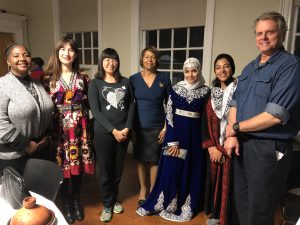
It’s not just students who derive inspiration from international visitors. Kyle says programs like Global UGRAD have created learning experiences for faculty as well, opening up their minds to different ways of learning and teaching across the world. One professor, for example, learned how to better relate to a student from China who rarely participated in his class when Kyle explained to the professor that cultural norms in the region where the student was from discourage that kind of classroom interaction.
Like the students who have had international roommates, Kyle says professors who teach international students end up calling her to ask if there are any faculty exchanges available to help them develop their own careers. “It broadens their horizon,” she says.
World Learning also helps make those faculty exchanges possible as implementer of the Fulbright Specialist Program. Sponsored by the U.S. Department of State, Bureau of Educational and Cultural Affairs, the Fulbright Specialist Program enables U.S. professionals and scholars to work on short-term projects overseas designed by local host institutions.
These exchanges make a difference for university faculty. For example, Dr. Quan Le, Associate Professor of Economics and Director of the International Business Program at Seattle University, says his experience in Vietnam had ripple effects when he returned to campus. “What I learned as a Fulbright Specialist I was able to bring back to my current job in the U.S. and help my students in Seattle get real-world entrepreneurial experience through my contacts at Dalat University.”
7. Making International Experiences More Accessible
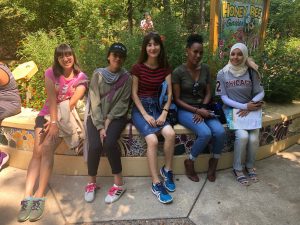
For many, though, opportunities to study or work abroad seem out of reach. “I have students who don’t even know what a passport is,” says Mallari at Bennett College. She explains that many of those U.S. undergraduate students are coming from public high schools that were underfunded and lacked resources that might have otherwise exposed them to the world.
“Being able to provide them with a global experience on campus through the interaction and engagement of international students and faculty is essential for them because this might be the only chance that they get to engage or to speak or to listen to someone of a different race and a different culture,” Mallari says.
At the University of Southern Indiana, Gregori-Gahan says that programs like Global UGRAD also open new possibilities for U.S. students who thought they would never have the resources to travel abroad. Unlike most international students, she notes that many Global UGRAD students come from countries and communities that are not especially wealthy and are studying in the U.S. on merit-based scholarships. “I think it helps [U.S. students] see that it is possible,” she says.
8. Diversifying Intercultural Experiences
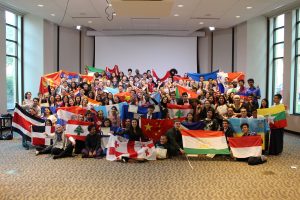
International exchange programs also diversify campuses across the U.S in less obvious ways. International enrollment at many U.S. schools is often skewed heavily to wealthier students from countries such as China and Saudi Arabia. But exchange programs like the Iraqi Young Leaders Exchange Program and Global UGRAD bring in a wider diversity of students.
“For us to be able to bring in people from Kazakhstan and Honduras and Guatemala, that really helps, even though it’s just one or two people from those countries,” says Gregori-Gahan at the University of Southern Indiana.
Rasmussen agrees. Montana State University hosts exchanges with students from North Africa and the Middle East — including Tunisia, Morocco, Libya, and more — which she notes are a particularly great learning experience for students. “We have really rich discussions about how their countries view democracy and how they’re navigating what’s going on in their countries,” she says.
9. Reaching the Next Generation of Global Citizens
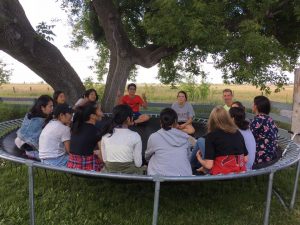
Colleges and universities also have the opportunity to foster global citizenship beyond their own campuses through international exchange programs. As a host of the EducationUSA Academy — a pre-college academic enrichment program for international high school students sponsored by the U.S. Department of State — Montana State University promotes intercultural understanding among high schoolers in the local Bozeman community.
As part of the program, the university pairs its visiting students with those from local high schools for activities and also hires local students to serve as global ambassadors. “Starting our Montana kids at an early age to be interested in the possibility of study abroad has been really exciting for us and our local high school educators, too,” Rasmussen says. “It’s a valuable experience to have when you’re young because it’ll stick will you as you move forward in your student life and career.”
10. Strengthening Community Bonds
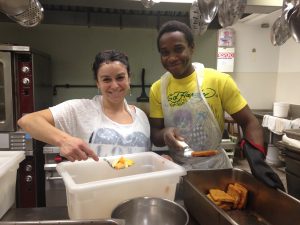
Local communities benefit from international exchanges in other ways, too. All of the academic exchange programs that World Learning implements encourage participants to develop friendships with local community members whether they stay with host families or volunteer with local organizations.
At the University of Southern Indiana, Gregori-Gahan says the Evansville community loves it when international students volunteer with local nonprofit organizations. As one inner-city after-school community development program staff member told her, these volunteer opportunities also give many community members their first opportunity to meet someone from another country.
And those friendships endure. Gregori-Gahan says that nearly 10 years after hosting the Iraqi Young Leaders Exchange Program, local host families and participants are still in touch. “People just fell in love with our students,” she says. The same is true at current host Wayne State University, where Fareed Shalhout, associate director of international programs, says the U.S. and Iraqi students remain close. “It’s not a program that comes and goes,” he says. “It’s really a lifetime of friendship.”
Learn more about these programs:
Saied Tafida is Fighting Corruption and Creating a Culture of Accountability in Nigeria
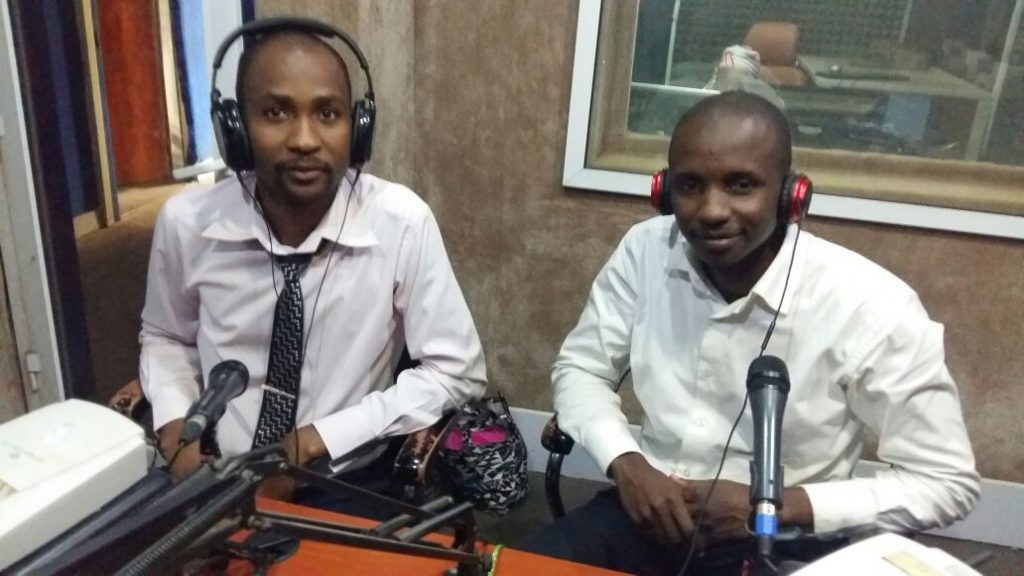
Saied Tafida is passionate about ending corruption.
That’s why he’s leading efforts in Nigeria to promote fiscal transparency, monitor the justice system, and empower citizens to hold their public officials accountable. “I believe open governance will change everything,” he says. “We just want to open everything.”
In recent years, Tafida has made marked progress toward that goal — a feat he credits to his participation in a 2016 seminar organized by Alumni Thematic International Exchange Seminars (Alumni TIES) in Nairobi, Kenya. At the seminar, he met and exchanged ideas with other young African leaders. The experience not only inspired him to pursue new avenues in his work, but he was also able to obtain a grant from Alumni TIES to help him do so.
Sponsored by the U.S. Department of State with funding provided by the U.S. government, Alumni TIES brings together alumni from U.S.-funded international exchange programs for additional training and collaboration focused on particular themes. Participants have the opportunity to apply for small grants to help them carry out projects in their communities.
At the 2016 Nairobi seminar, Tafida and his fellow participants were all alumni of the Mandela Washington Fellowship for Young African Leaders, which empowers young people through academic coursework, leadership training, and networking. Tafida was a Mandela Washington Fellow in 2014, traveling to the U.S. to study at Syracuse University’s Maxwell School of Citizenship and Public Affairs.
Tafida took advantage of that first exchange opportunity to learn more about open governance. He’d already begun to understand the importance of transparency through his work in public relations for a Nigerian television station and, later, local government tax agencies. But his coursework at Syracuse, particularly a class about how to use social media for open governance, gave Tafida the practical skills he needed to become an effective advocate.
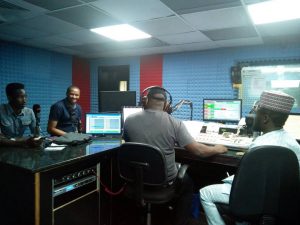
In 2015, upon his return to Nigeria, Tafida founded FollowTaxes, an online platform that educates taxpayers on their rights and obligations. As he explains, this knowledge protects citizens from being taken advantage of by corrupt tax officials who might otherwise inflate the amount of money owed and pocket it for themselves. “That’s the power of knowledge,” Tafida says.
Beyond educating the public, Tafida also knows that it’s critical to hold corrupt officials accountable for their actions. Yet, too often, corruption cases drag through the courts — which are part of an opaque and corruptible system — and are quietly thrown out. But while Tafida wanted to take on corruption in the criminal justice system next, he wasn’t sure how to start.
That changed at the 2016 Alumni TIES conference.
Tafida took notice when one of the Mandela fellows from South Africa spoke about his work in the justice sector, pointing out that corruption is composed of a triangle of vices: money laundering, tax evasion, and judicial corruption. FollowTaxes was already working on the first two, Tafida says. “We had to add the third angle of the triangle.”
Inspired by the seminar, Tafida launched TransparencIT, an NGO that tracks major corruption cases in the courts and shares that information with the public. Through this work, he says, prosecutors and judges alike have been more in careful in ensuring that cases are properly handled. “You don’t need to hire a forensic auditor to ask if a certain judge is doing his work,” Tafida says. “No, people alone can do it.”
Alumni TIES also influenced Tafida’s work in other ways. Through the seminar, Tafida developed a partnership with a Mandela fellow from Togo. Together, they applied for — and won — a $10,000 Alumni TIES grant to expand FollowTaxes to Togo and increase its reach in communities with limited internet access in both countries.
With that grant money, Tafida and his partners have been able to host town hall meetings in local communities and create social media campaigns to raise awareness among citizens about their right to hold their government officials accountable. They also opened a transparency center to guide people on how to use their tools as well as how to build on their model to track government systems themselves.
“If only one person knows what you’re supposed to do, it’s easy to bribe that one person,” Tafida says. “But when there are a thousand people that know exactly what you’re supposed to do, bribing those people is going to be difficult.”
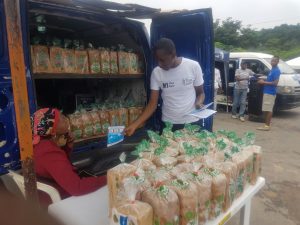
This grassroots approach has already yielded successes. Tafida recalls meeting with one frustrated community in Nigeria, where the local government had spent about U.S. $120,000 to build and open a hospital. Though the developer built the hospital on time, it sat vacant and empty for months. Community members worried the developer would demand more money to actually equip and open the hospital, even though that had been part of their original deal.
At Tafida’s prodding, the elders of the community went together to meet with the developer. They thanked him for his role in building the new hospital, telling him that they’d seen the records on the deal and knew he was the one who brought such an important service to the community. As Tafida explains it, the developer realized that if the community members had seen the records then they would know that equipping the hospital was part of the original deal.
“Within weeks, the hospital was equipped,” Tafida says.
It’s not just citizens who are benefiting from Tafida’s open governance work, though. “You’d be surprised how happy the government is with our activities,” he says. Now that Nigerian citizens have greater oversight of their government’s activities, they’re more satisfied with the work of their public servants. And the government, not Tafida, gets to take credit for that transparency. He’s okay with that; all that matters to him is that the government and the public are communicating.
Encouraged by these successes, Tafida is motivated to keep reaching as many people as possible. One by one, he says, they can change Nigeria’s culture to one where citizens ask questions of their government and elected representatives recognize that they’re supposed to serve the public. “Changing such culture will take time,” he says. “But this is where we’re headed and this is where we’re going to get.”
Alumni TIES is sponsored by the U.S. Department of State with funding provided by the U.S. government and administered by World Learning.
This Young Kosovar is Transforming Her Country Through Entrepreneurship
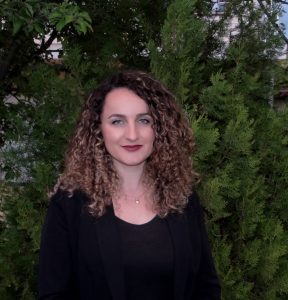
Majlinda Ruhani believes entrepreneurship is key to a thriving Kosovo.
Though Europe’s newest country has made great strides in the 20 years since it won its independence, many Kosovars still struggle to find work. The unemployment rate hovers around 30 percent and more than 50 percent of youth are unemployed — forcing many to leave the country to find jobs.
Ruhani wants to turn that around. As the head of incubation at VentureUP, an innovation and entrepreneurship center at the University of Prishtina, Ruhani equips students with job and soft skills training, including the skills they need to launch startups and, ultimately, transform their country’s economy by creating new job opportunities.
“Entrepreneurship is one of the solutions to use all the potential we have with the youth of Kosovo,” she says.
Ruhani represents a new generation of Kosovar leaders that World Learning supports through the Transformational Leadership Program — Scholarships and Partnerships(TLP), funded by the U.S. Agency for International Development. Since 2014, the program has awarded scholarships to promising young Kosovars to pursue their studies in the United States. It has also strengthened the capacity of the University of Prishtina to prepare students for the modern workforce.
TLP has been a catalyst for Ruhani’s work as well. VentureUP was conceived by the program’s advisory committee, and it is run by a cadre of talented TLP alumni. Ruhani is one of them — and she credits her scholarship with sparking a passion that changed the course of her career.
Discovering entrepreneurship at Willamette
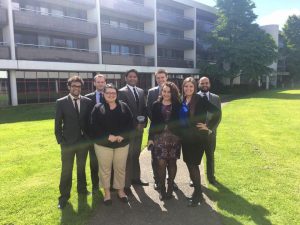
In 2015, Ruhani was pursuing a career in finance when she won a TLP scholarship to the Master of Business Administration program at Willamette University in Salem, Oregon.
Willamette seemed like a perfect fit: Not only is the university known for the strength of its finance courses, it also places a premium on experiential learning. Ruhani was curious about the active, hands-on approach to learning. “It’s something that we’re missing here,” Ruhani says. “Our country is new and we’re still developing in many areas, especially in education.”
She didn’t realize that experiential learning could transform her career goals.
“That was one of the most difficult but at the same time one of the most amazing experiences,” Ruhani says. “It’s exciting to be able to go through the first stages [of a project] no matter if it’s business or an NGO. You have so many challenges, and that’s what makes it really interesting.”
Bringing knowledge back to Kosovo
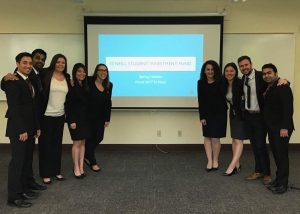
After completing her MBA, Ruhani continued exploring this new world of startups and entrepreneurship as a consultant when she returned home to Kosovo.
Ruhani fell in love with entrepreneurship through one of Willamette’s signature programs, a two-semester course in which students team up to offer consulting services to nonprofit clients. Her team helped the Salem Parks Foundation develop plans for fundraising, marketing, and more. Ruhani was excited to help the organization launch initiatives like its now-annual Walk in the Park benefit.
“I feel like this area is one of the most interesting areas in the business world,” she says.
Her skills were in demand. Organizations across the country hired Ruhani to research donor communities, analyze their business models, and offer plans to expand their services. She saw how entrepreneurship could spur job creation firsthand through her consulting work with an NGO called E Shpis, which employs marginalized women to bake and sell traditional Albanian delicacies.
Ruhani loved that her consulting offered the opportunity to work with different ideas and perspectives. “My main goal was to get an understanding of the business culture here to identify the trends and all the changes that we’re going through as a country,” Ruhani says.
She’s optimistic about those changes. Ruhani says she now sees more companies in Kosovo creating partnerships with international organizations. Those partnerships force companies to meet the standards expected in more developed countries. “[It’s] really good for Kosovo,” she says.
Fostering entrepreneurship among Kosovo’s youth
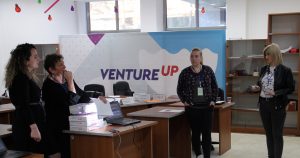
As the new head of incubation at VentureUP, Ruhani looks forward to passing her knowledge along to the country’s next generation of entrepreneurs.
Founded in late 2017, VentureUP aims to connect University of Prishtina students to the working world. It offers experiential workshops to develop students’ soft skills as well as the technical skills they need to succeed as entrepreneurs. It introduces students to ways they can use innovation to make a difference in their communities and promotes research and development opportunities at the university.
Through the incubation program — which is just now getting underway with its first cohort of 10 teams — Ruhani and other staff members will guide students in turning their business ideas into reality. June Lavelle, a business incubation consultant in the United States who has created incubators around the world, donated her time and expertise to help develop VentureUP’s program.
VentureUP will offer working space, mentoring opportunities, and trainings on how students can get their startups ready for the market. The incubator will also host events so students can network with potential collaborators and investors. “Youth in Kosovo really need this kind of opportunity,” Ruhani says. “We’re trying to help them as much as we can.”
TLP’s robust alumni network has helped make this all possible. Many of VentureUP’s staff members — including CEO Fis Malesori — are TLP alumni. Like Ruhani, these alumni returned from their scholarship programs not only with technical expertise but with a vision for Kosovo’s future. “It’s amazing being part of the TLP community, because pretty much every member of this community acquired a lot of knowledge through their studies,” she says. “They are so eager to apply that knowledge and make things better here.”
University of Houston-Victoria Hosts Three Global UGRAD Students
World Learning Receives Grant from the Stevens Initiative to Connect Students in the U.S., Middle East, and North Africa through Virtual Exchange
Grantees will create opportunities for U.S. and international students to build global competencies and career readiness skills through virtual exchange.
Today, the Stevens Initiative announced funding for The Experiment Digital and the NextGen Coders Network implemented by World Learning. They are two of six programs selected through an international competition to fund virtual exchange programs in the United States and the Middle East and North Africa (MENA).
World Learning is part of the third round of Stevens Initiative grantees. These exchanges will enable thousands of young people to gain the skills that they need to succeed in today’s economy and society, and to establish new cross-cultural connections.
Under the Stevens Initiative, The Experiment Digital, implemented by World Learning, is a two-month summer virtual exchange program that helps high school aged youth become more civically engaged by empowering them to plan and execute a community service project. Through interactive modules on leadership, community issues, and digital citizenship, participants will gain 21st century global competency skills. Through small group dialogue with participants from different countries, participants will develop mutual understanding and learn how to communicate across cultures and regions.
Under the Stevens Initiative, the NextGen Coders Network, implemented by World Learning, will create a virtual exchange opportunity for university students and young professionals from Iraq, Palestinian Territories, and the United States of America. These exchanges will take place through “hackathons” involving collaboration to solve grand challenges facing their communities using coding-oriented solutions. World Learning will implement the program in partnership with organizations in the U.S. and abroad.
“World Learning is thrilled to partner with the Stevens Initiative on these innovative virtual exchange programs that connect and empower young people across the world,” said Carol Jenkins, CEO of World Learning. “Building on our decades of experience in international exchange – and leveraging our robust digital platform and expertise in STEM education – we look forward to creating even more opportunities for young people to make a difference at home and globally.”
“I am very pleased with the grants that we are awarding for the next round of Stevens Initiative funded virtual exchange programs,” said Marie Royce, Assistant Secretary of State for Educational and Cultural Affairs, U.S. Department of State. “As bandwidths increase and platforms get more sophisticated, virtual exchanges open opportunities for international exposure and connection to hundreds of thousands – and potentially millions – of people. Virtual exchanges like those funded by the Stevens Initiative also facilitate cross-cultural experiences and build career readiness skills. I look forward to a great expansion of this innovative program over the next year and continuing to honor this living legacy to Ambassador J. Christopher Stevens.”
Through the work of these six new programs, the Stevens Initiative will expand its reach to nearly 40,000 students in 15 MENA countries and the Palestinian Territories, and in 44 U.S. states, Puerto Rico, and Washington, DC. Programs will begin this April and will continue through the summer of 2021.
Other programs include:
- Global Nomads Group (GNG): Campfire, GNG’s flagship program, focuses on virtual storytelling – an interdisciplinary and powerful vehicle for youth to build empathy, self-awareness, and global understanding.
- International Research & Exchanges Board, Inc. (IREX): The Global Solutions Sustainability Challenge (GSSC), implemented by IREX, connects students in the United States, Jordan, and Iraq to virtually collaborate on a sustainable solution to a contemporary business challenge.
- Soliya: Soliya’s Connect Global will bring together college-aged youth in the United States and in the Middle East and North Africa for online, face-to-face dialogue.
- William Davidson Institute at the University of Michigan (WDI): Implemented by WDI, Business & Culture: A Virtual Practicum is a classroom-to-classroom, action-learning course on international business cultures that brings together students from Egypt, Lebanon, Libya, and the U.S.
“The Aspen Institute values the open exchange of ideas and the work of the Stevens Initiative allows for just that,” said Elliot Gerson, Executive Vice President of Public & Policy Programs at the Aspen Institute. “Through virtual exchange, youth in the US and MENA region are able to engage with one another, learn together, and become global-minded leaders.”
Created in 2015 by the Stevens family as a living legacy to Ambassador J. Christopher Stevens, the Stevens Initiative is a public-private partnership that is building global competencies and 21st century skills for young people in the United States and the Middle East and North Africa. Through virtual exchange, the Initiative connects youth through technology to collaborate and learn together, giving them access to a substantive international exchange.
The Initiative is awarding these six grants to schools and organizations to implement virtual exchange programs, lasting from several weeks to several months, for students from middle schools, high schools, colleges, and universities.
World Learning works globally to enhance the capacity and commitment of individuals, institutions, and communities to create a more peaceful and just world through education, sustainable development, and exchange. Our programs advance leadership in more than 150 countries.
The Experiment Digital and the NextGen Coders Network are funded by the Stevens Initiative, which is sponsored by the U.S. Department of State with funding provided by the U.S. Government and is administered by the Aspen Institute. It is also supported by the Bezos Family Foundation and the governments of Morocco and the United Arab Emirates.
More Information
The U.S. Department of State’s Bureau of Educational and Cultural Affairs (ECA) builds relations between the people of the United States and the people of other countries through academic, cultural, sports, professional and private exchanges, as well as public-private partnerships and mentoring programs. These exchange programs improve foreign relations and strengthen the national security of the United States, support U.S. international leadership, and provide a broad range of domestic benefits by helping break down barriers that often divide us. Visit eca.state.gov.
The Aspen Institute is an educational and policy studies organization based in Washington, DC. Its mission is to foster leadership based on enduring values and to provide a nonpartisan venue for dealing with critical issues. The Institute is based in Washington, D.C.; Aspen, Colorado; and on the Wye River on Maryland’s Eastern Shore. It also has offices in New York City and an international network of partners. For more information, visit www.aspeninstitute.org.
The Bezos Family Foundation supports rigorous, inspired learning environments for young people, from birth through high school, to put their education into action. Through investments in research, public awareness, systems building and programs, the foundation works to elevate the field of education and improve life outcomes for all children.
The Embassy of the United Arab Emirates (UAE) in Washington, D.C. is committed to promoting and increasing cross-cultural understanding and educational exchanges. In line with the UAE Government’s values, the Embassy supports educational programming at schools and universities across the U.S. The Embassy works with U.S. institutions to provide unique opportunities for peer-to-peer exchanges and help broaden student’s horizons.
The Kingdom of Morocco has held a longstanding commitment to the promotion of peace, mutual understanding and respect across all fora. In line with this commitment, the Government of the Kingdom of Morocco is a strong supporter of the Stevens Initiative and is proud to be included in its programs, which foster opportunities for cross-cultural exchanges between youth.
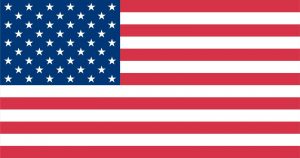
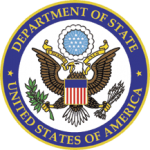
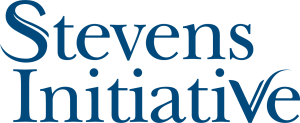

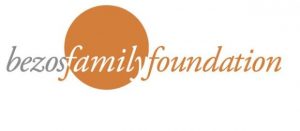
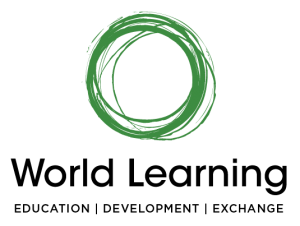
Before and After: The Life-Changing Effects of an International Exchange Program
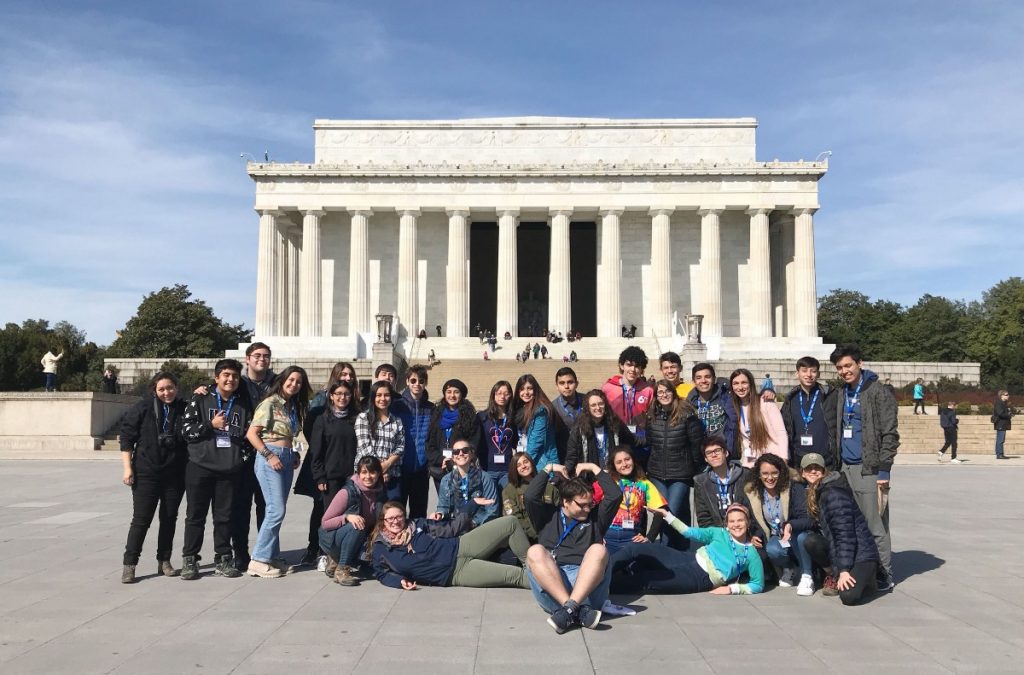
Three weeks may not seem like a lot of time. But when you’re on an international exchange program, three weeks can be transformative.
This spring, high school students from Argentina and Chile shared just such a life-changing experience as part of the Youth Ambassadors Program. Sponsored by the U.S. Department of State, with funding from the U.S. government, the program brings together high school students and adult mentors from across the Western Hemisphere for three-week exchanges to the United States to promote mutual understanding, increase leadership skills, and prepare youth to make a difference in their communities.
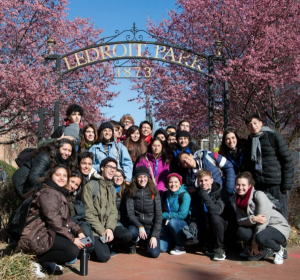 Youth Ambassadors explore cities and communities across the U.S. during their exchange. This cohort from Argentina and Chile started their exchange in Washington, DC, where they learned about U.S. history and culture. Then the group split up and fanned out to Kansas City, Missouri, and Denver, Colorado, for nearly two weeks to live with U.S. families and become part of local communities. The host community segment of the exchange was implemented in partnership with Global Ties KC and WorldDenver, members of the Global Ties Alliance. Finally, they returned to Washington, DC, where they developed and presented their ideas for projects they would carry out in their home communities upon their return.
Youth Ambassadors explore cities and communities across the U.S. during their exchange. This cohort from Argentina and Chile started their exchange in Washington, DC, where they learned about U.S. history and culture. Then the group split up and fanned out to Kansas City, Missouri, and Denver, Colorado, for nearly two weeks to live with U.S. families and become part of local communities. The host community segment of the exchange was implemented in partnership with Global Ties KC and WorldDenver, members of the Global Ties Alliance. Finally, they returned to Washington, DC, where they developed and presented their ideas for projects they would carry out in their home communities upon their return.
World Learning caught up with the group at the beginning and end of the exchange to find out what difference that three weeks made. Among them was Paula Castro, a participant from Mendoza, Argentina who said, “I had no idea how many doors would be opened for me. Now I just see the world differently. I just want to keep on doing this, keep on inspiring, keep on traveling, and keep on learning things. This was easily the best experience of my life.”
Read more about her experience and that of her fellow Youth Ambassadors below:
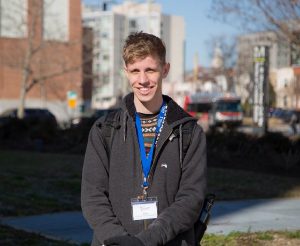 José I Vieux
José I Vieux
Diamante, Argentina
BEFORE THE HOMESTAY:
José I Vieux has always longed to see the world. Having only ever visited countries bordering his native Argentina, he jumped at the opportunity to travel to the U.S. as a Youth Ambassador — a program that also matched his interests in learning more about politics and leadership. He was especially excited for a homestay in Kansas City. He didn’t know what to expect from that adventure into the heart of the U.S., but planned to keep his eyes wide open. “You get to know a whole different culture,” he said. “This is a whole different world.”
AFTER THE HOMESTAY:
For José, the happiest memory of his trip was meeting the family that he lived with during his stay in Kansas City. Throughout his stay, the family — two parents, a younger sister, and an older brother — took him out for dinner and other activities. “I can assure you that the most impressive and best thing that this program gives you is the host family,” he said. “I got to know the American life from the inside.”
Though he didn’t share the same political perspectives as his host family, living with them gave him the opportunity to understand them, and shattered some of his stereotypes about American people.
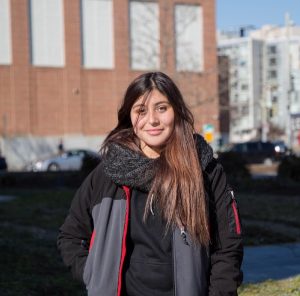 Alexia Paz
Alexia Paz
Iquique, Chile
BEFORE THE HOMESTAY:
Alexia Paz believes serving her community — through beach clean-ups, visiting with senior citizens, and volunteering with animal shelters — has made her a better person. She joined the Youth Ambassadors Program at the recommendation of her teacher in the English Access Microscholarship Program, thinking it could help her improve her English and her ability to serve. She was most excited to start working on her community project, which she envisioned would involve providing services for orphans. “I’m not just learning English,” she said. “I’m learning values. I’m learning how to make those values work. I’m learning how to be useful in my community.”
AFTER THE HOMESTAY:
Alexia found new inspiration for her community project during her stay in Kansas City. Through excursions and site visits, the Youth Ambassadors met with local firefighters and organizations like Operation Breakthrough, which provides support to children and their families struggling with poverty. These meetings helped Alexia better understand what she could do to help children in her own city of Iquique. “I have a lot of ideas in my mind now,” she said. Realizing that her city’s bureaucracy might make it impossible to work with orphans, she decided instead to work with children ages 4 to 12, offering them a healthy space to forget about their problems through games and fun activities. “So it’s more close to me and more real.”
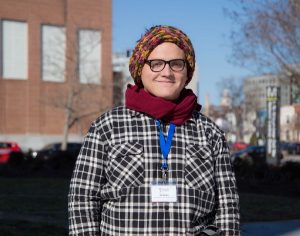 Nehuen Salazar
Nehuen Salazar
Temuco, Chile
BEFORE THE HOMESTAY:
Nehuen Salazar fights for gender and LGBTQ equality. Over the past year, he’s worked to raise awareness in his high school about these issues, encouraging students and teachers to talk about gender identity and stereotypes. He applied to join the Youth Ambassadors Program to help sharpen his leadership skills and become an even more effective advocate. He was particularly interested in improving his social skills, which he thinks are critical in getting people to talk about these issues. “I want to help and be a supporting person for my classmates and learn to feel like a better person,” he said.
AFTER THE HOMESTAY:
Though Nehuen may not have been prepared for the weather in Denver — which was particularly cold compared to his home in southern Chile — he was inspired by all he had the opportunity to do there. The Youth Ambassadors volunteered with a local food bank, visited a library dedicated to African-American history, met with refugees and immigrants, and took leadership workshops. These experiences have helped Nehuen achieve all that he set out to do. “I really feel that I have improved my skills and my abilities,” he said. “Now it’s easier for me to make any project starting from zero. I don’t have the fear that I cannot do what I want to do. I’m more confident about myself.”
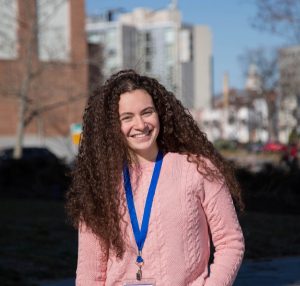 Paula Castro
Paula Castro
Mendoza, Argentina
BEFORE THE HOMESTAY:
Paula Castro loves being involved in her community. She’s a member of Model UN and a student-body legislator at her school, where she’s interested in helping students learn how to train their brains to study more effectively. She was excited to apply for the Youth Ambassadors Program since it offered her a chance to carry out a project that could create change in her community, but she also had another important goal in mind: to improve her own skills — in leadership, empathy, and more — so that she can inspire others. “I think as a young woman I have the job to inspire any woman, any person, to be better, to make a change,” she said.
AFTER THE HOMESTAY:
Paula was amazed by the changes she saw in her fellow Youth Ambassadors when they all reconvened in Washington, DC, after their stays in Kansas City and Denver. “I really see how they improved,” she says. “They’re more outgoing and confident about themselves.” She sees those changes in herself, too. Though she’d been a bit worried about whether she’d fit in with her host family in just 12 days, she found she adapted quickly and became so close to her host sister that they began to consider themselves best friends. “My goal was to learn about other ways of thinking and to see things from different positions, be more empathetic, and to inspire,” she said. “I really expected the program to make me that person and I think it has. I’m not the same as before. I think I’ve gotten better. We all have.”
In Virginia, an International Exchange Program Leaves a Legacy
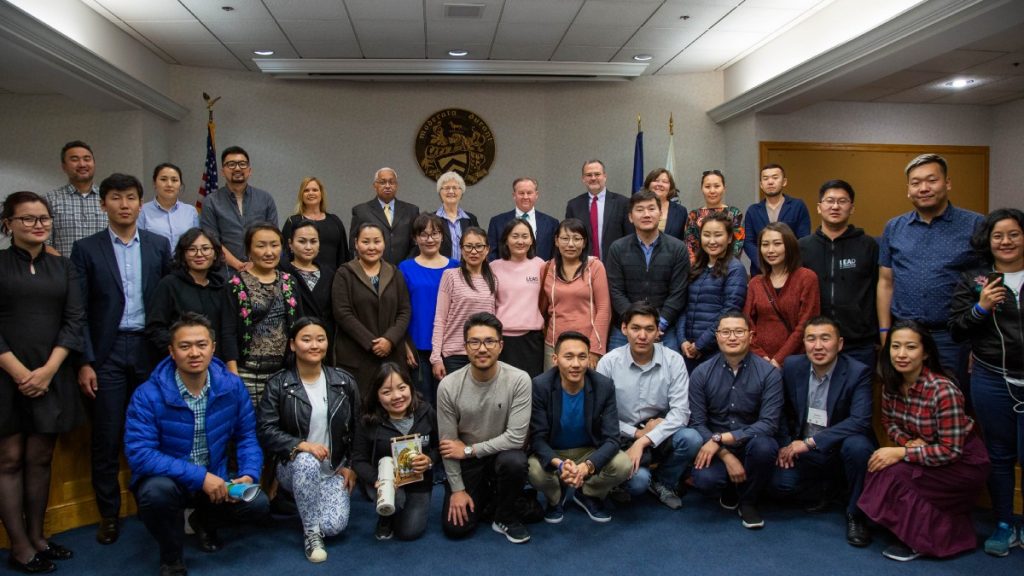
It’s no surprise that in its short lifespan, the Leaders Advancing Democracy (LEAD) Mongolia program has driven remarkable change in Mongolia. LEAD fellows, who are the country’s most promising future leaders, are helping children access quality education in remote areas, fighting corruption in their government, and standing up to sexual harassment and domestic abuse.
But the program has also left its mark on communities across Virginia.
It has done so through the power of international exchanges. LEAD Mongolia, funded by the U.S. Agency for International Development (USAID) and implemented by World Learning, provides emerging democratic champions with leadership training and civic engagement skills. As part of their training, LEAD fellows visit Virginia and Washington, DC, through exchanges organized in partnership with the University of Virginia (UVA) Center for Politics.
These cross-cultural exchanges provide LEAD fellows and U.S. citizens alike the opportunity to share knowledge and cultivate relationships. Those experiences have lasting results — in many different forms.
Promoting Global Alliances and Stability
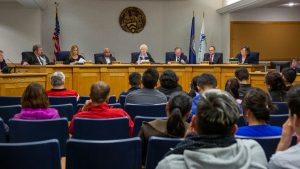
At first glance, it was a city council meeting like any other: Council members discussed local ordinances, recognized a retiring city employee, and listened to constituents’ concerns. But this particular meeting, held last fall in Staunton, Virginia, was more than an exercise in civics — it was an opportunity to shore up democracy in the U.S. and abroad.
LEAD Mongolia participants lined the seats in the back of the meeting room, having come to experience local government and citizen participation in action. “It was an opportunity to witness with my own eyes how the public hearing and city council meeting happens,” says LEAD fellow Enkhbayar Batsukh. “[Mongolia hasn’t] yet developed this culture of civic engagement.”
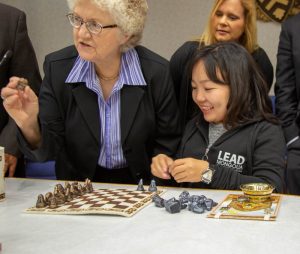
Mongolian democracy is young, having emerged in 1990 after a peaceful revolution. LEAD Mongolia fellows are committed to ensuring the longevity of their hard-earned democratic system — and this international exchange helps them do so. They visit places like Montpelier, home President James Madison, father of the U.S. Constitution, to learn how democracy here was founded, and they see how it is sustained today by attending city council meetings and expert talks.
These visits have exponential benefits for the global community, according to Daman Irby, director of global initiatives at the UVA Center for Politics. Democratic countries are among the strongest U.S. allies — and LEAD fellows return home better equipped to advocate for their country’s democratic system. “Our nation benefits when other countries have peace and freedom,” he says. “They’re better trading partners and better friends.”
Staunton Mayor Carolyn Dull, who met with the LEAD Mongolia fellows after the city council meeting, says these exchanges help strengthen U.S. democracy as well by reinforcing the ideals upon which the country was founded and which are enshrined in its Constitution. “To hope for a more perfect union, you’ve got to know each other,” she says. “You can’t stay strangers.”
Building Cross-Cultural Relationships
While global alliances are critical for security and stability, Mayor Dull says there’s great value in building cultural bridges at the individual level as well. “People tend to hate things they don’t know or are afraid of,” she says, noting that LEAD provided a rare and valuable occasion for Staunton residents to meet people from Mongolia and learn about its culture.
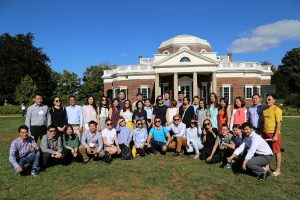
That is by design. Throughout all its international exchange programming — which includes several other programs in partnership with World Learning — the UVA Center for Politics creates ample opportunities for Charlottesville-area residents to connect with visitors, who attend bluegrass festivals, football games, rodeos. Irby even recalls taking a group of South Asian visitors to a fiddlers’ convention, where they immediately bonded with locals who were camping out on the convention grounds.
“Inevitably when you get people together, it’s impossible not to develop a greater understanding of the other people,” Irby says. “If nothing else, just seeing that they are, in fact, people.” When people meet LEAD fellows, he adds, they come to understand Mongolia beyond Genghis Khan and nomadic farmers.
And, sometimes, they even develop lasting connections. Irby recalls a recent dinner at the Barbeque Exchange in Gordonsville, Virginia. He was surprised that night when chef Craig Hartman came out of the kitchen to thank him for bringing a group of 30 LEAD fellows to the restaurant months before. Hartman told Irby that he was still in touch with some of the Mongolian visitors on Twitter and Facebook. “They really are conn
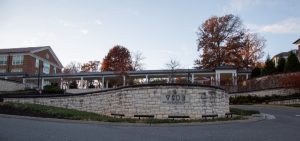
ecting with the community,” Irby says.
For others, hosting international visitors may be their first exposure to a larger world. Patricia Trice, superintendent of the Virginia School for the Deaf and Blind (VSDB), says visits from LEAD fellows are good for her students, most in grades K-12, , who often face exclusion and thus are behind socially and in world knowledge. VSDB teachers point out Mongolia on the map and talk a little about the country before LEAD fellows come to visit. “Some [students] still may not understand that concept,” Trice says. “But it’s still giving them a sense that this is someone who doesn’t live here. It just broadens their horizons.”
Sharing Best Practices
Exchange programs also provide a platform for people in both the nonprofit and the business community to share best practices, build their networks, and advance their interests globally.
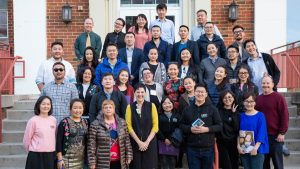
VSDB, for example, often receives requests from people around the world wishing to tour its facilities such as the independent living apartments, where students learn life skills like paying bills and preparing meals. Trice says it’s only natural to accommodate these requests as information-sharing is critical to improvement. In fact, she also sends her administrative team to schools in other states to learn about how they’re implementing new practices.
“We’re all about giving back to the field and we feel like we have a lot to share,” Trice says. “For countries where their services for disabilities are minimal, if none, we want to be able to try to help increase their services and see what we can share with them.”
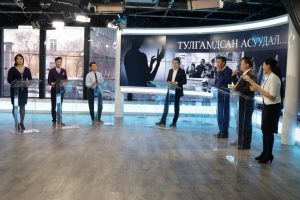
In Mongolia, that has already made a difference. LEAD fellows have become outspoken advocates for deaf education in a country that has only one school for deaf and hard-of-hearing children. In 2017, Mongolian students erupted in protest over their teachers’ refusal to use sign language in class. Lkhagva Erdene, a LEAD fellow and executive news producer at Mongol TV, moderated a live panel debate about the issue. It was the country’s first public debate on sign language. Then, last year, Tuul Batsuren, a LEAD fellow and teacher at the school, helped her students rally yet again to replace their useless emergency system — a ringing bell — with a system of lights.
Stories like that are rewarding for Trice. “It makes you feel like all the work you put into your school helped somebody else,” she says. “That’s what it’s all about. Everybody’s got the same goal. So, I’m like, gosh, don’t keep anything secret. What do I have that you could use and what do you have that I could use?”
These exchanges help Trice and her staff improve services for VSDB’s international student population by giving them insight into the resources (or lack thereof) their students may have had prior to enrolling. “It’s hard for us to understand a student not having access to education,” she says. “Not just being able to go to school, but having a program that’s fully accessible for people with disabilities.” That insight can help them better meet those students’ needs.
Economic Benefits and Beyond
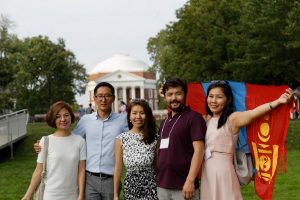
Virginia reaps even more benefits from international exchange programs. Tourism is a major industry in the state, which houses some of the nation’s most treasured historic sites including the homes of several of Founding Fathers. According to the Virginia Tourism Corporation, in 2017, the state’s tourism revenues reached $25 billion, which supported 232,000 jobs, $5.9 billion in salaries and wages, and $1.73 billion in state and local taxes.
Though LEAD Mongolia may account for only a small fraction of that revenue, Irby maintains that the program has a real impact on local businesses. It supports local restaurants like the Barbeque Exchange as well as hotels in Charlottesville, Virginia Beach, and beyond. LEAD fellows also get plenty of time to shop for souvenirs, clothing, and other items.
People and organizations across Virginia seem to appreciate their engagement. Irby says groups rarely turn him down when he asks if he can bring a sizable group of Mongolian professionals to visit with them. Not only is the UVA Center for Politics well known and respected across the state, but he says people are also fascinated by the opportunity to meet visitors from Mongolia.
That, ultimately, is why World Learning and the UVA Center for Politics plan to continue to cultivate international exchanges: People everywhere have so much to learn about one another and the world. When people get to know each other, good things happen.
Meet the Modern Leaders Who Are Empowering Women Around the World
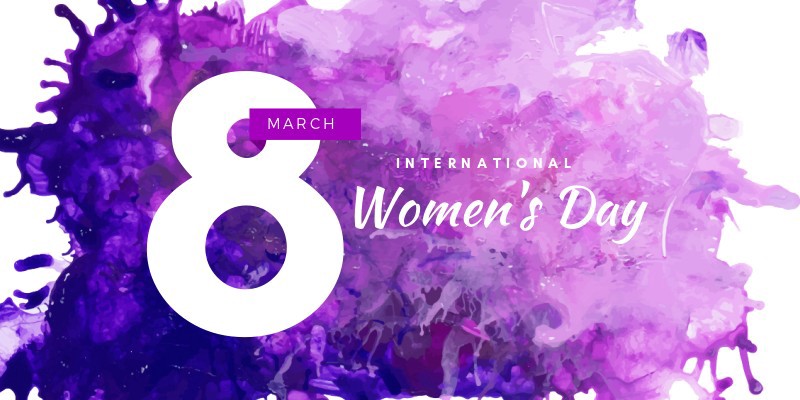
International Women’s Day, celebrated globally on March 8, is an opportunity to celebrate the social, economic, cultural, and political achievements of women and efforts to support them.
At World Learning Inc. — which includes World Learning, The Experiment in International Living, and School for International Training (SIT) — we work with emerging leaders around the world, equipping them with the skills and support to drive change in their communities and beyond. For example:
- World Learning’s diverse portfolio of global development and exchange programs strengthens leadership, intercultural understanding, and civic engagement among young people and adults; strengthens education systems; trains people in 21st-century skills, and more.
- The Experiment in International Living offers immersive study abroad experiences that give high school students a chance to explore the world while broadening their worldview and developing soft skills that will help them succeed in college and their careers.
- School for International Training prepares students to be interculturally effective global citizens through field-based academic study abroad programs for undergraduates and accredited master’s degrees and certificates for graduates and professionals.
Today, we’re shining a light on how nine of our more than 125,000 alumni are working to empower women and make the world a more inclusive and just place.
World Learning alumni return to their communities and, using their new skills, networks, and small grant funding, become changemakers.
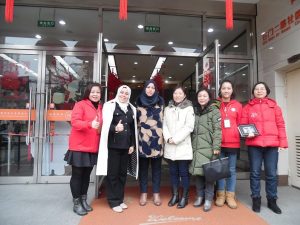 Nacira Amari
Nacira Amari
Nacira Amari has dedicated her career — which has taken her from mathematics professor to politician and director of an education institution — to creating new opportunities for women in Algeria. Amari joined the Leaders for Democracy Fellowship program, which provides academic and hands-on training to civil society leaders from across the Middle East and North Africa. There, she built her network and gained practical skills by working at the Arab Institute for Woman at Lebanese American University.
Those new skills have helped her make a difference. In 2017, Amari was elected to the Saida city council, where she has worked to increase women’s representation in government and to open schools that provide women with job skills training. She continues to urge other women to lead in their communities, too. “Women are [stronger] by developing themselves and then changing their society,” she says. “Victory is the ally of women who give others a better life.”
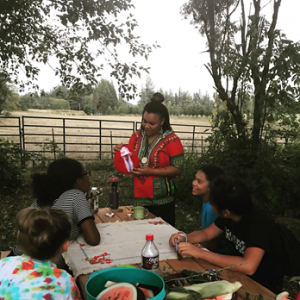 Allie Dyer
Allie Dyer
Former Fulbright U.S. student to Ghana Allie Dyer — along with other black, indigenous and leaders of color— noticed that health education was failing young women of color in their community of Portland, Oregon. They set out to change that. In 2017, Dyer earned a small grant to co-launch the program Brown Girl Rise. She did so after participating in the New Frontiers of Global Public Health seminar organized by U.S. Alumni Ties, which brings together alumni of U.S. government-sponsored exchange programs to learn about critical issues and collaborate with fellow alumni.
Brown Girl Rise leads health education and radical empowerment workshops rooted in community and culture for young girls and women in Portland. They discuss sisterhood and safe spaces, explore their historical connections to food and land, and share how racial and gender stereotypes impact how they view their bodies. “What we’ve learned is the holistic power of community — that community itself can be healing,” Dyer writes.
Brown Girl Rise is funded through an Alumni Thematic International Exchange Seminars (Alumni TIES) small grant from the U.S. Department of State, with funding provided by the U.S. government and administered by World Learning.
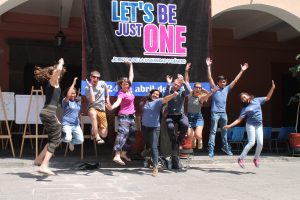 Alitzel Castillo, Jazmín Villalobos, Roberta S. Jacobson, Gladys Del Ángel, and Emmanuel Galindo
Alitzel Castillo, Jazmín Villalobos, Roberta S. Jacobson, Gladys Del Ángel, and Emmanuel Galindo
Violence against women is a serious problem facing communities around the world. In Puebla, Mexico, one group of high school students banded together to tackle that problem. In 2016, Alitzel Castillo, Jazmín Villalobos, Roberta S. Jacobson, Gladys Del Ángel, and Emmanuel Galindo took part in Jóvenes en Acción, a U.S. Department of State exchange program that builds civic engagement and leadership skills among students in Mexico. As part of the program, participants carry out projects in their communities.
These high schoolers launched a campaign to raise awareness about gender violence and the stereotypes that perpetuate it. “We knew that we had to make teenagers see that gender violence does not look just like some guy hitting a woman, or like street harassment,” Castillo writes in an email, “it looks more ‘familiar’ for all of us because we live surrounded by stereotypes and gender roles.” The students offered a series of workshops exploring gender stereotypes, LGBTQ issues, and sexual harassment, culminating in a Diversity and Gender Day, which brought more than 700 people for activities devoted to gender and inclusion.
The Jóvenes en Acción Program is sponsored by the U.S. Department of State with funding provided by the U.S. Government and administered by World Learning.
School for International Training alumni put their skills into practice, advancing social justice in their careers and lives.
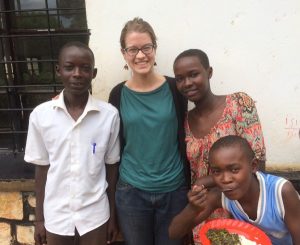 Leslie Massicotte
Leslie Massicotte
Alice Rowan Swanson fellow Leslie Massicotte, an alumna of SIT Rwanda: Post-Genocide Restoration and Peacebuilding, works in Kigali, Rwanda, with the youth center Mind Leaps. The center aims to give at-risk youth a place for education, training, and fun. Massicotte, an ESL teacher, saw increasing numbers of pregnancies among the young women at the center, so she used the Swanson Fellowship support to bring sexual and reproductive education to Mind Leaps.
“The whole idea is to use the money to start the teaching, but to make the project sustainable and able to run without my help,” she says. Leslie sees this effort as a natural outgrowth of studying with SIT. “My passion for giving back, serving others, and being abroad came together at SIT.”
Read more about Massicotte’s work here.
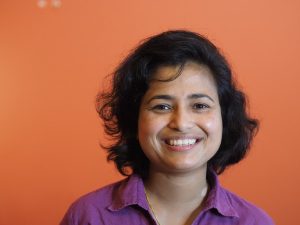 Suman Pant
Suman Pant
Suman Pant, academic director of SIT Nepal: Development, Gender, and Social Change in the Himalaya, strives to show students how the currents of gender and development intertwine in Nepal. Her PhD dissertation examined Nepal’s community forestry, in which women play a key role. “This idea of conservation emerges from eco-feminism theories. In Nepal, community forestry is very interesting because that’s the only platform where the national law mandates that there should be more women board members than men.”
Such ideas are relatively new to Nepal, Pant explains. “Thirty years ago, when education was still scarce and a little bit expensive, men went to school. Women didn’t. The illiteracy rate among women was very, very high. Now when you go to schools you’ll see — in primary schools, secondary schools — girls and boys [are] almost an equal percentage. I think Nepal’s case in terms of gender is very interesting because it has transitioned quite a bit, and at a fast pace and quite healthily, too.”
See a video of Pant discussing her program here.
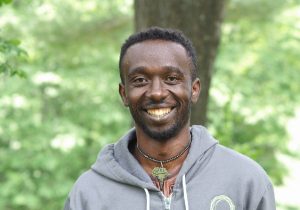 Sunday Justin
Sunday Justin
Sunday Justin has ties both to SIT Study Abroad and SIT Graduate Institute. He’s an alumnus of the CONTACT summer peacebuilding program, and academic coordinator for SIT in Rwanda. He’s part of our list for International Women’s Day for his women-focused work.
Rwanda’s civil war and genocide left many women who had become pregnant through rape. Sunday co-founded Iteme Foundation, which aims to support and empower not only the victims of rape, but also young mothers for whom prostitution has become a dangerous way out of poverty that often leads to pregnancy or HIV infection.
Being a single mother, Sunday says, “comes with a stigma. It comes with a judgment; it comes with a lot of conflict between them and their family and their children.”
Sunday’s story is part of SIT’s OnSITe podcast series.
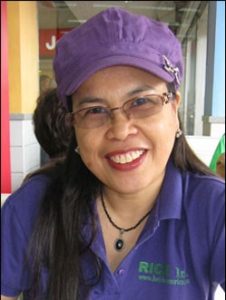 Vicky Garcia
Vicky Garcia
Vicky Garcia and Mary Hensley met in the early 2000s as International Management students at SIT Graduate Institute. After graduating from SIT, Garcia returned to her native Philippines, joining forces with Hensley to bring a new kind of economic security to the indigenous rice farmers of the Cordillera region of the Philippines. Building that kind of empowerment among indigenous farmers made sense to Garcia not only as a farmer’s daughter, but as someone who’d overcome physical and cultural challenges. She had contracted polio as a child and was left unable to walk.
Despite being told she’d never amount to anything because of her disability, Garcia eventually worked for the Philippine government, then came to the United States to attend SIT. Back home, she made her way to the very remote steppes of the Cordillera, where she has since helped farmers get assistance from the government and connected them to customers all over the world who appreciate the unique heirloom species of rice they grow. She runs Rice Inc. with Hensley.
Listen to their story here.
Experiment in International Living alumni return home transformed — and channel that transformation into their high schools and communities.
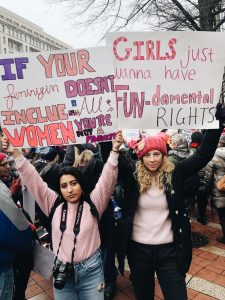 Yareni Murillo
Yareni Murillo
Yareni Murillo has been an activist since her freshman year when, as one of few Latinas in a mostly white high school, she sought ways to connect with other students and founded the school’s first Hispanic Club. “I realized that if no one else is going to speak for me, then I have to speak up for myself,” she says.
Last summer, Yareni traveled to India with The Experiment — an experience she describes as the best in her life. Visiting a new country with a diverse, all-female group led to empowering discussions about intersectionality and patriarchy.
Yareni is now working on a digital history project about Mexican-American women in the Chicano movement, who are often overshadowed by men. She brought a sign to this year’s Women’s March in Washington, DC, that read, “If your feminism doesn’t include all women, then it’s not feminism.”
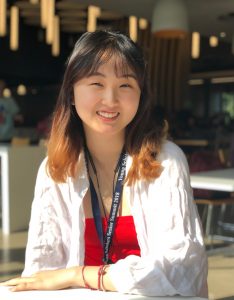 Hayeon Kayla Lee
Hayeon Kayla Lee
Hayeon Kayla Lee went to Japan as a high school freshman, in part to confront some deeply held family beliefs. Some of her relatives experienced Japanese imperialism in South Korea during World War II and still harbored very negative opinions about Japan.
“I always feel that the way to solve conflict and interact with others is through learning the background and history of a culture you might not understand,” says Hayeon, now a senior at a boarding school in New Hampshire. That summer in Japan with The Experimentwas a turning point that helped Hayeon begin to separate her own views from her family’s.
When she’s at home in Los Angeles, Hayeon tutors students in her inner-city neighborhood, focusing on helping girls from low-income and immigrant backgrounds improve their English and creative writing.
As for her own education, in college Hayeon wants to study abroad again — in Japan.
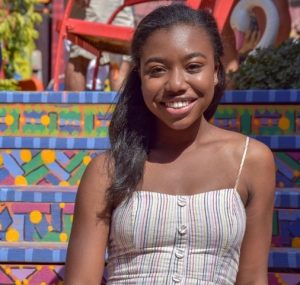 Lauren Jasper
Lauren Jasper
Lauren Jasper used to notice the Ujamaa Collective storefront in her Pittsburgh neighborhood, but didn’t know much about the nonprofit until last year, when the aspiring architect took a class at her high school called Global Leadership by Design. That’s where she found out about Ujamaa’s mission to create entrepreneurship and education opportunities for Africana women.
The same year, Lauren went to South Africa on The Experiment’s Leadership and Social Change program — an experience that ultimately drew her closer to Ujamaa’s purpose and her own. South Africa’s history of apartheid and social justice resonated with her, and the leadership aspect of the program was particularly important to Lauren, who knows she’ll need those skills in a the United States, where only 400 black women have ever been licensed as architects.
As a busy senior, Lauren still finds time to help in the Ujamaa boutique and create programming for teens. Through her architecture studies at Cornell, she hopes “to carry social justice into my designs to create affordable and sustainable housing.”
DYLEP Fellowship Awards 3 Community Action Projects in Iraq and the U.S.
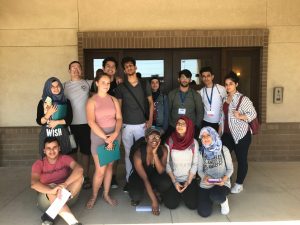
Students from across Iraq and the United States are getting ready to lead the way in their communities when it comes to peacebuilding, women’s empowerment, and cross-cultural exchange.
In December, World Learning awarded Digital Young Leaders Exchange Program (DYLEP) Fellowships to three students from Iraq and the U.S. to create innovative action projects in their home communities. The DYLEP Fellowship aims to empower program alumni to serve their communities by providing up to $5,000 (USD) each to three project teams: two based in Iraq and one based in the U.S. The fellowship is funded with the help of the Putnam Foundation and World Learning board member Rosamond Delori.
The three teams are comprised of DYLEP alumni from the past two years. World Learning’s DYLEP, which was funded by the Stevens Initiative, is a virtual exchange program for high school students in Iraq and the U.S. Participants develop their leadership skills, interest in civic engagement, and respect for diversity. Since its inception in 2016, DYLEP has reached more than 300 youth from all over the world.
Here’s a look at the three awarded projects:
Filmshakers Festival
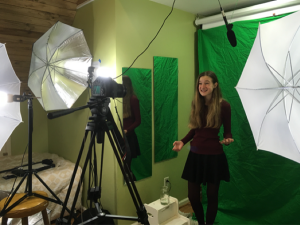
The Filmshakers Festival, led by 2017 DYLEP alumna Mia, seeks to build peace and combat bigotry through film. The festival will feature work from high school and college students, and will take place in Charlottesville, Virginia, a city with a strong history of filmmaking. Charlottesville also was the site of white supremacy riots in August 2017. Students across Virginia will submit short films and gather in fall 2019 for a one-day festival featuring film screenings, dialogues with the filmmakers, and open discussions on the themes of peacebuilding and anti-bigotry. The submissions will be archived on the Filmshakers Festival website, with the long-term goal of making this an annual event.
Mia is a high school junior in Blacksburg, Virginia, and an experienced filmmaker, having participated in film festivals across the country along with her sister, Ava, since middle school. She was inspired to start the Filmshakers Festival by her own meaningful experiences as a film festival participant as well as her DYLEP exchange. “The people I met during the program continue to inspire me to do what I love and work to help others,” she says, “I hope that the Filmshakers will be effective in starting a discussion among young filmmakers, the Charlottesville community, and beyond.”
The Woman Voice Program
The Woman Voice Program, led by DYLEP 2016 alumna Fatimah, is focused on empowering women between the ages of 15 to 26 through workshops relating to leadership, sexism, self-defense, women’s rights, and mental health. The workshops will take place in March 2019 in Hilla, Iraq, in partnership with the British Language Institute. The project is particularly aimed at teaching women how to defend themselves against emotional, physical, and sexual abuse.
Fatimah said that the idea came to her because of her own experiences with sexism, an issue which she sees as commonplace in Iraq. Rather than accept sexism as a part of life, she decided to act. “I decided to break up the circle of silence and speak the truth,” Fatimah says. She hopes that the impact of this project will extend beyond its participants, noting that sexism is at the root of other challenges the country faces such as poverty, lack of education, and an increase in female suicides. “This issue is important because [it] affects everyone,” she says.
Fatimah is collaborating with fellow DYLEP alumni as well as alumni from the Iraqi Young Leaders Exchange Program (IYLEP) to complete this project. The team is excited to use the leadership skills they learned on DYLEP and IYLEP to empower young women in Hilla and beyond.
Leaders of Tomorrow
Leaders of Tomorrow, led by DYLEP 2017 alumna Areej, is a digital exchange project that aims to connect high school students from Iraq, the U.S., and Mexico. The two-month virtual exchange will focus on conflict resolution and will include dialogue sessions, video calls, virtual workshops, social media discussions, and community service. The project team will recruit 65 participants from across the three countries to join the program, with the goal of having participants build their own community action project at the end of the two months.
Areej is an alumna of both DYLEP and IYLEP. She is collaborating with fellow IYLEP and DYLEP alumni as well as alumni from Jóvenes en Acción, a U.S.-Mexico youth program administered by World Learning, whom she met during her IYLEP exchange. Areej says she was inspired by her experience in DYLEP; she wanted other youth to have similar opportunities to interact with people from around the world and learn to create change in their communities. “There are some youth who have energy and want to make their community a better place, but they don’t know how,” Areej says. The Leaders of Tomorrow team hopes that by the end of the exchange, youth will have the tools they need to do just that.
Written by Lydia Grossman, Program Associate, Global Exchange
Exploring Displacement and Colonization Through Cultural Exchange
“This piece is not for you. This is an unapologetic grasp for identity.”
So begins a new multimedia artistic work born out of an international exchange program called Digital Natives, which brought together a group of young Native American artists and those from African migrant communities in Belgium.
Last month, the eight artists gathered on a Native American reservation in New Mexico where, through workshops with artist-mentors, they explored how their displacement affects their cultures and identities. Those workshops culminated in the creative work titled Feeling Everything All at Once, which expresses their multiculturalism as well as the generational trauma they’ve inherited from their ancestors who were colonized and forced from their homes.
“We didn’t want to make a video that was talking about the past the whole time,” says Oriana Mangala Ikomo Wanga, a 21-year-old musician. Her parents came to Belgium from the country’s former colony, now the Democratic Republic of Congo, where they experienced traumas of which they still cannot speak. Ikomo Wanga believes it’s important for her generation to talk about those traumas, but she says, “We really wanted to make something contemporary that talks about how we feel now.”
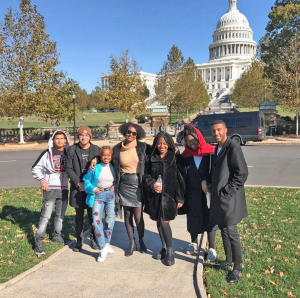
Digital Natives is part of Communities Connecting Heritage (CCH), a program sponsored by the U.S. Department of State with funding provided by the U.S. government and administered by World Learning. CCH engages underserved communities, empowers youth, and builds global partnerships through exchange projects exploring cultural heritage topics. Participating organizations and individuals partner up and submit proposals; selected partnerships receive funding and undergo a World Learning training course designed to help them manage the exchange.
For this exchange, CCH brought together Soul of Nations, an organization established to uplift displaced Indigenous communities throughout the Americas, and BOZAR, a distinguished international cultural center based in Brussels, Belgium. The organizations recruited Native American participants from the Institute of American Indian Arts (IAIA) in Santa Fe, New Mexico, and young people from African migrant communities in Brussels.
“It’s important to connect minority communities with other minority communities or Indigenous communities because they’re undervalued, underheard, and underserved,” says Soul of Nations Executive Director Ernest Hill. “[This exchange is] an alliance built on peace and unity.”
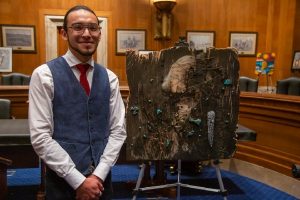
The exchange started virtually. In their first Skype session in October, each of the U.S. and Belgian participants shared an object with cultural, personal, or artistic significance. Gregory Ballenger, a student from IAIA, shared a traditional rug that he wove with his mother, a Navajo fashion designer. As Ballenger explained to his peers, his family had encouraged him to leave the reservation and pursue other opportunities. But being part of his colonizers’ culture made Ballenger realize he identifies more with the values of his own. Weaving the rug was an opportunity to reconnect with his roots.
“I look at that rug as a constant reminder of … how difficult it is to be a young Indigenous person who has been disconnected from his culture,” he says. “Weaving is not a man’s art — I shouldn’t be weaving in the first place, culturally — but that is one of the only ways that I have access to traditional art.”
After their virtual introduction, the students met in person on a reservation near Santa Fe, where they took part in workshops with professional artists, created a print together using their own inked fingertips, and, through group discussions, shared their experiences with feeling displaced, alienated, and silenced by colonialism.
“We started to notice similarities and holes in our understanding of ourselves and how the lines of our identity become very, very muddy in the 21st century because we’re displaced from our original ancestral lands where we’ve lost languages, we’ve lost cultural teachings,” Ballenger says.
Ikomo Wanga agrees. This exchange program taught her that colonization looks similar no matter where it is carried out. She also noticed connections between African and Native American cultures, from the colors they use in their artwork to the importance of rhythm and music. “It was super mind-opening,” she says.
Those discussions fueled the multimedia project, which the group emphasizes is a personal account of the complexities they face as 21st-century displaced people — it is not meant to speak for their entire communities. In it, they assert their rights to their language and their lands, while describing the grief and uncertainty that comes with trying to bridge their native culture with that of their colonizers.
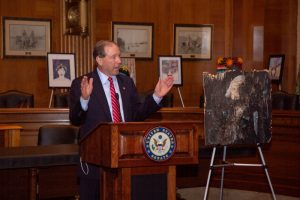
The artwork has already received recognition. On November 14, it was screened at a reception in Washington, DC, hosted by U.S. Senator Tom Udall from New Mexico as part of the Congressional Exhibition Project showcasing emerging Native American contemporary artists. It will premiere internationally in May when the U.S. students travel to Brussels to take part of BOZAR’s Next Generation, Please! festival. In the meantime, the exchange program will continue through virtual discussions and workshops.
Ikomo Wanga hopes the multimedia project will build awareness about the experience of being displaced from one’s culture and homeland.
“I would like to make people aware of what is happening still and that the past is not in the past,” she says. “It still has repercussions on us now.”

